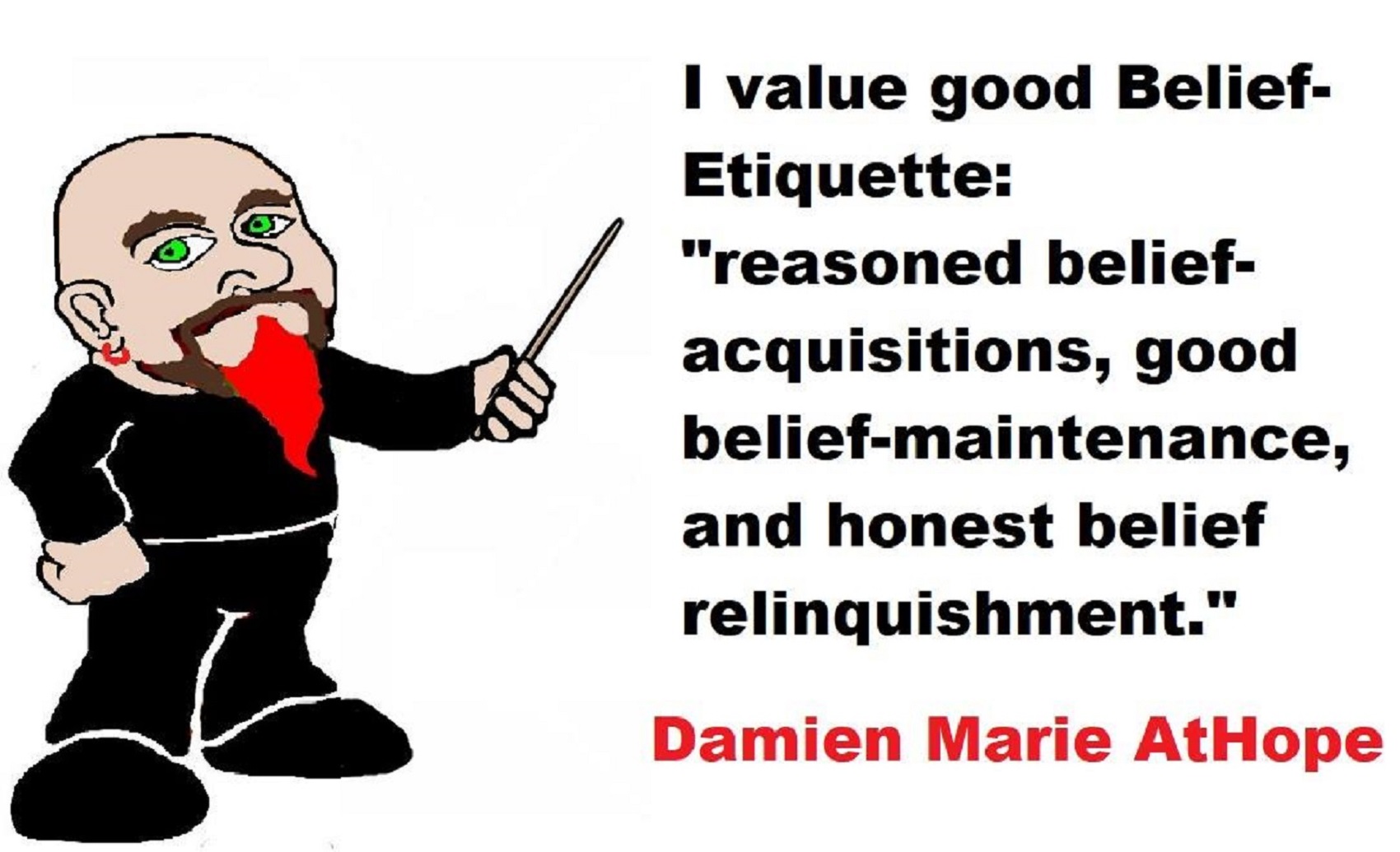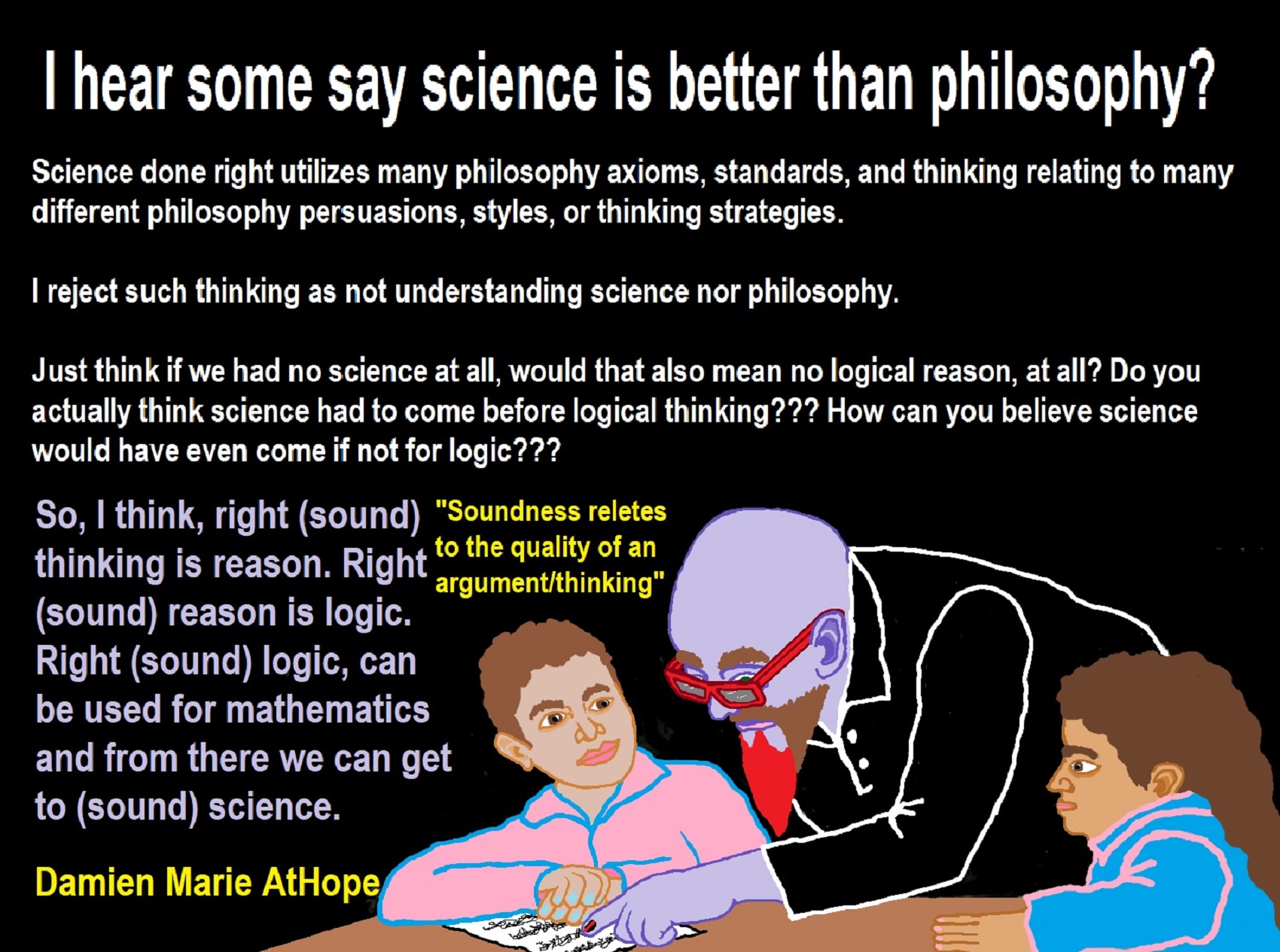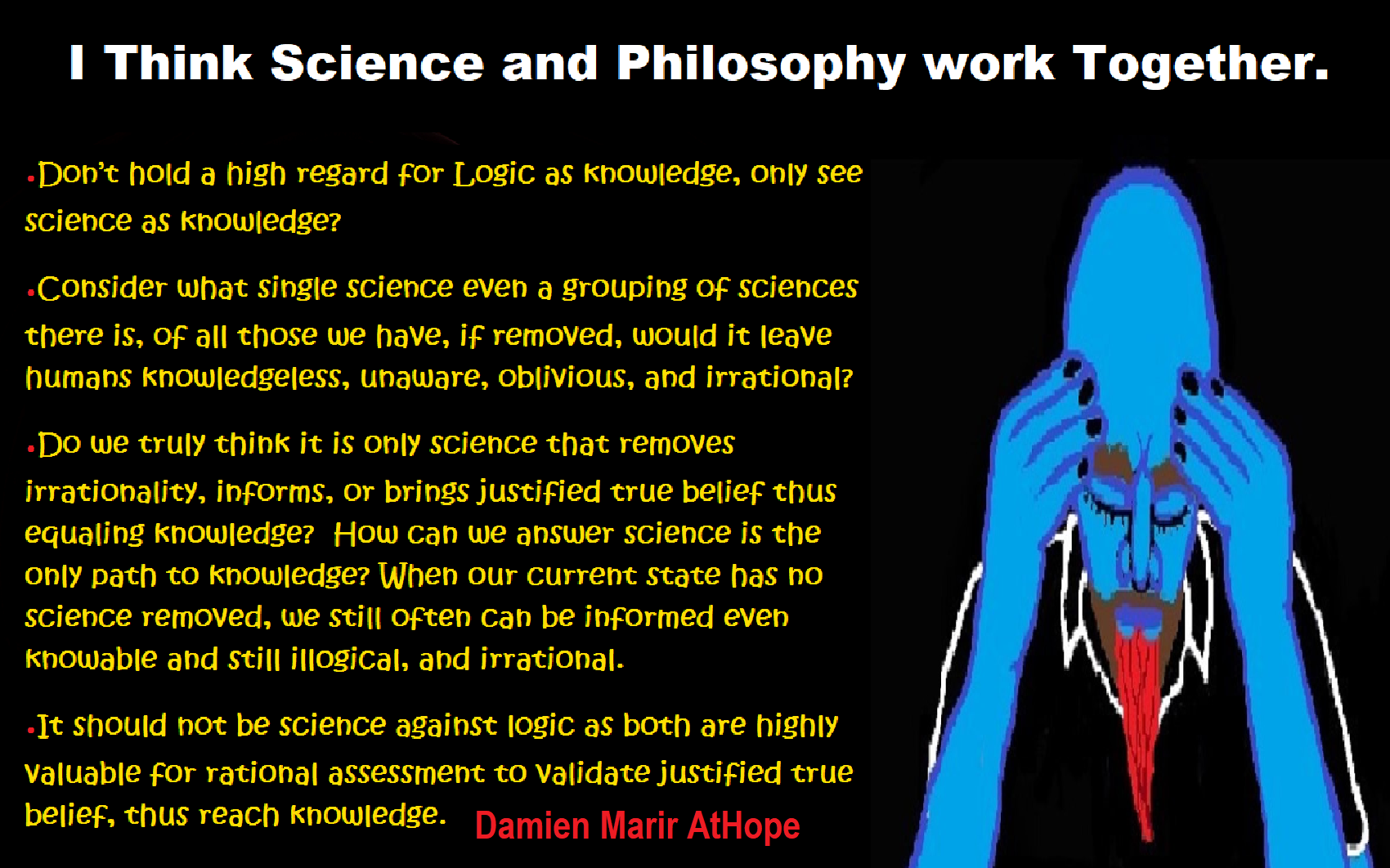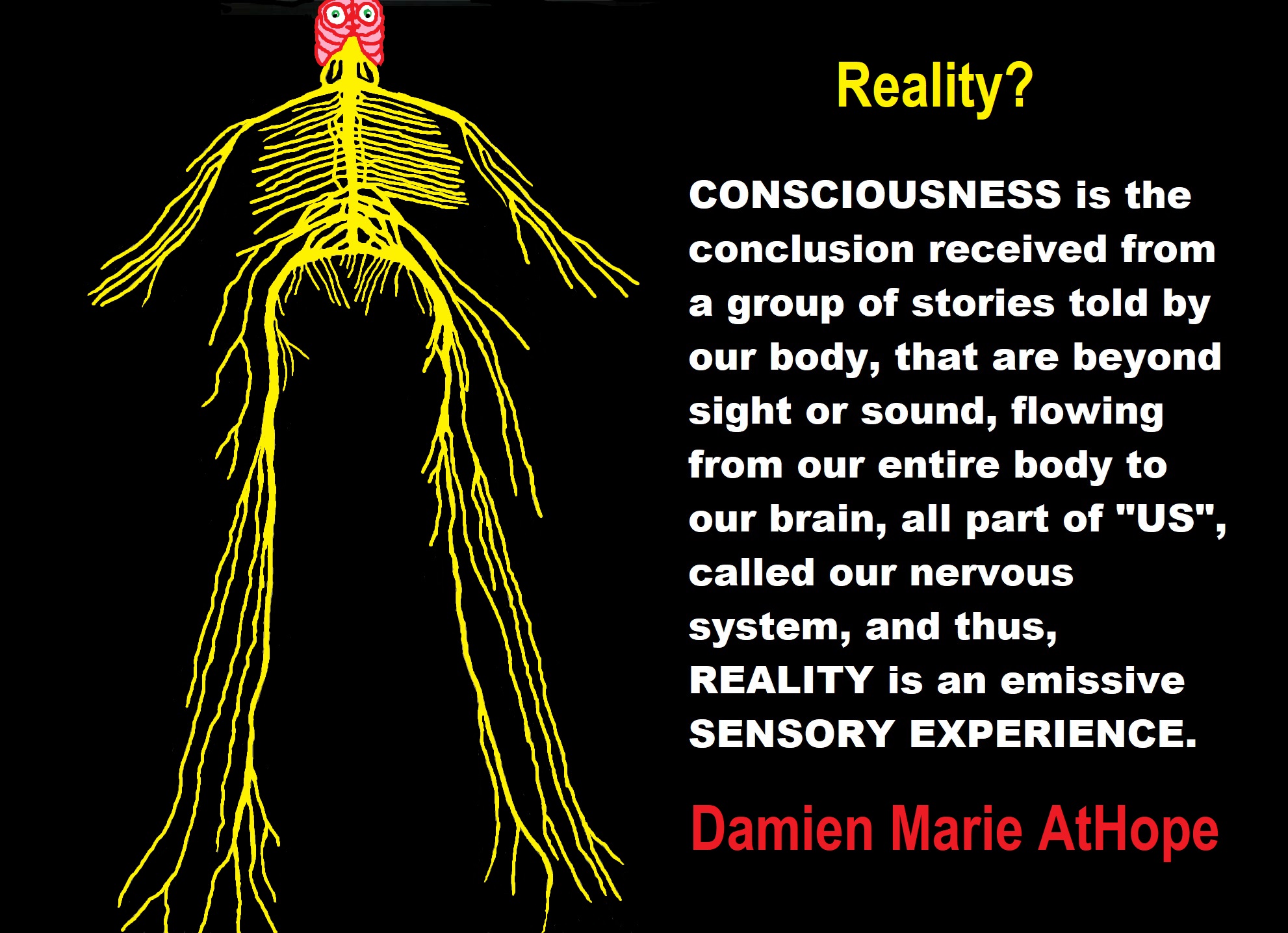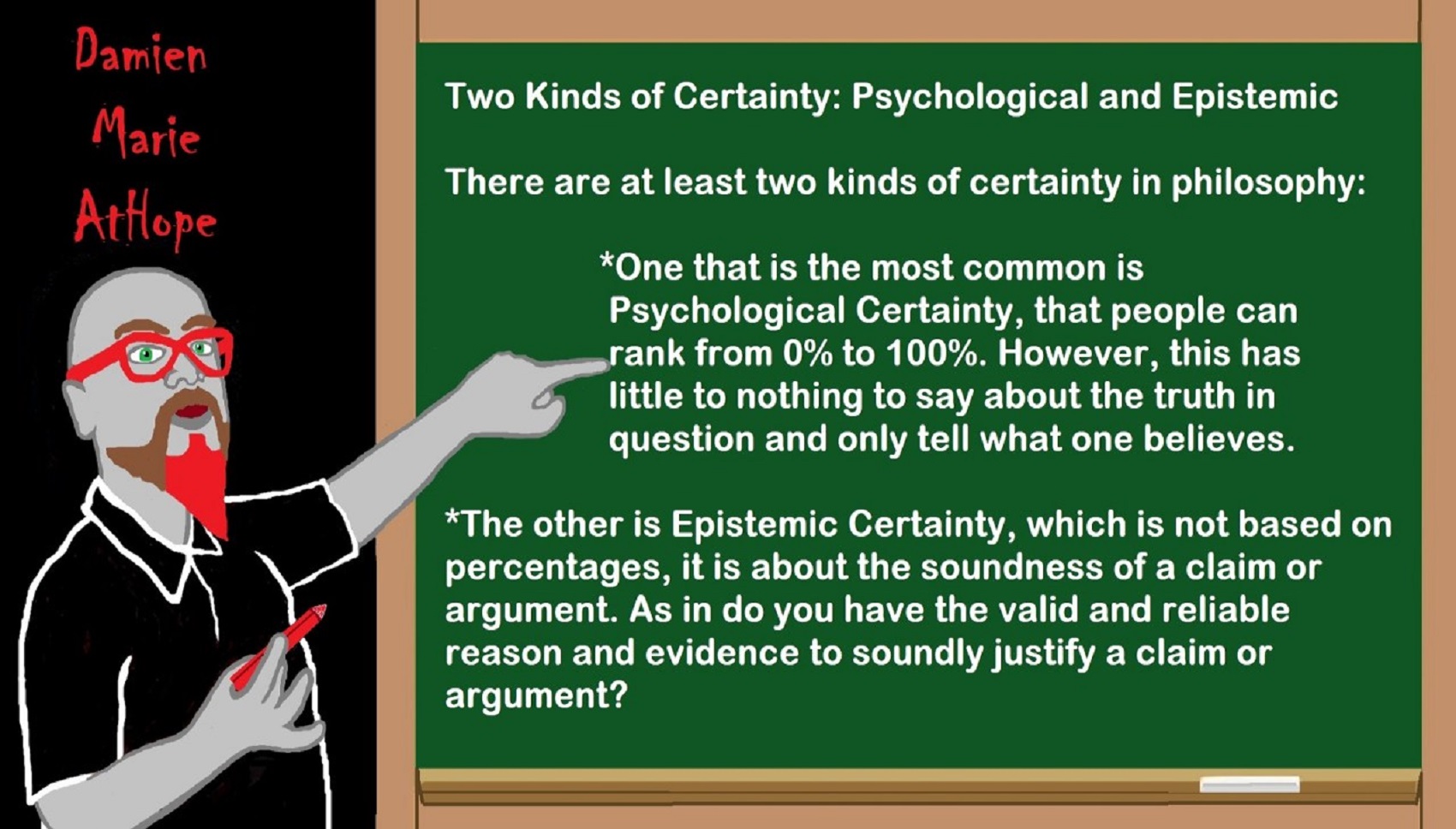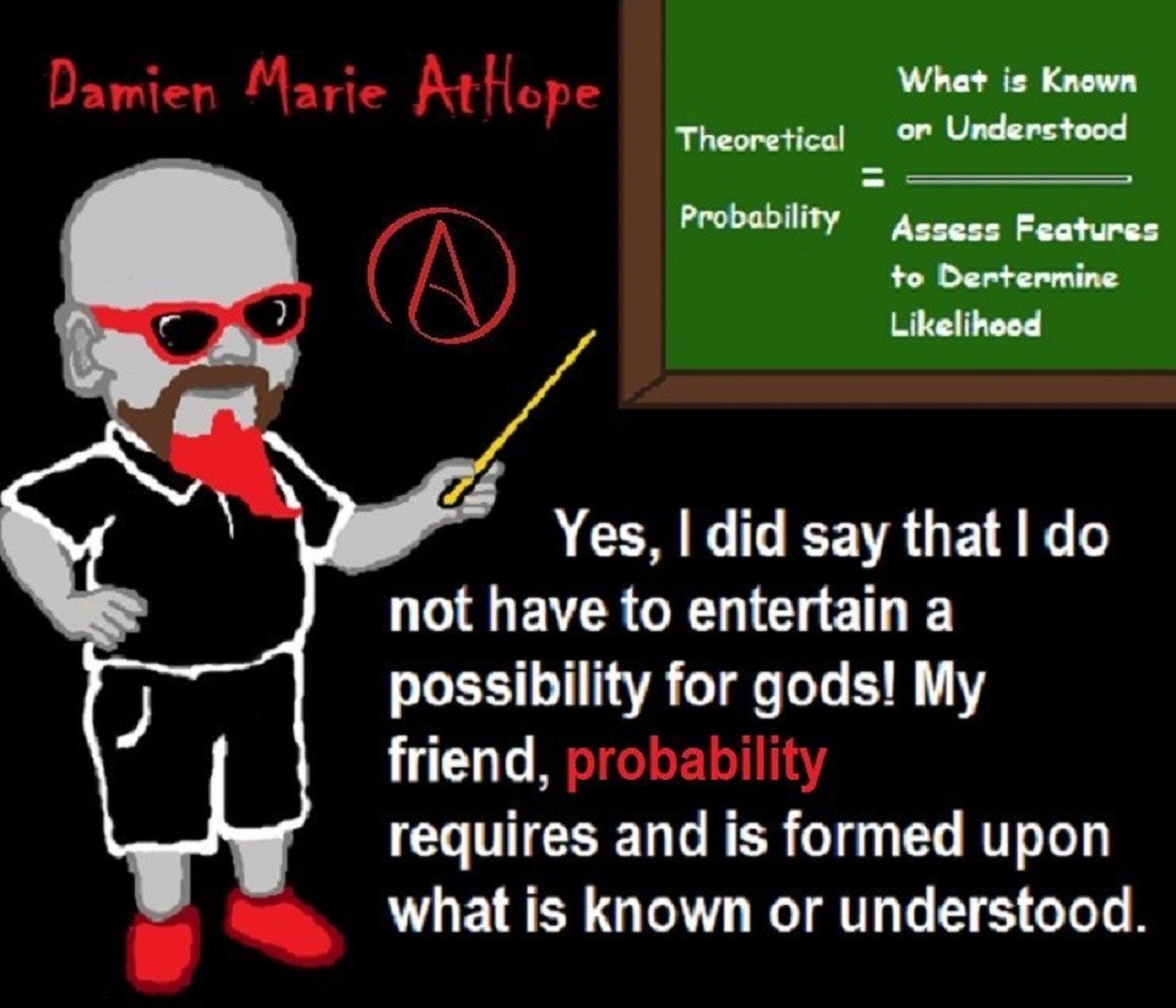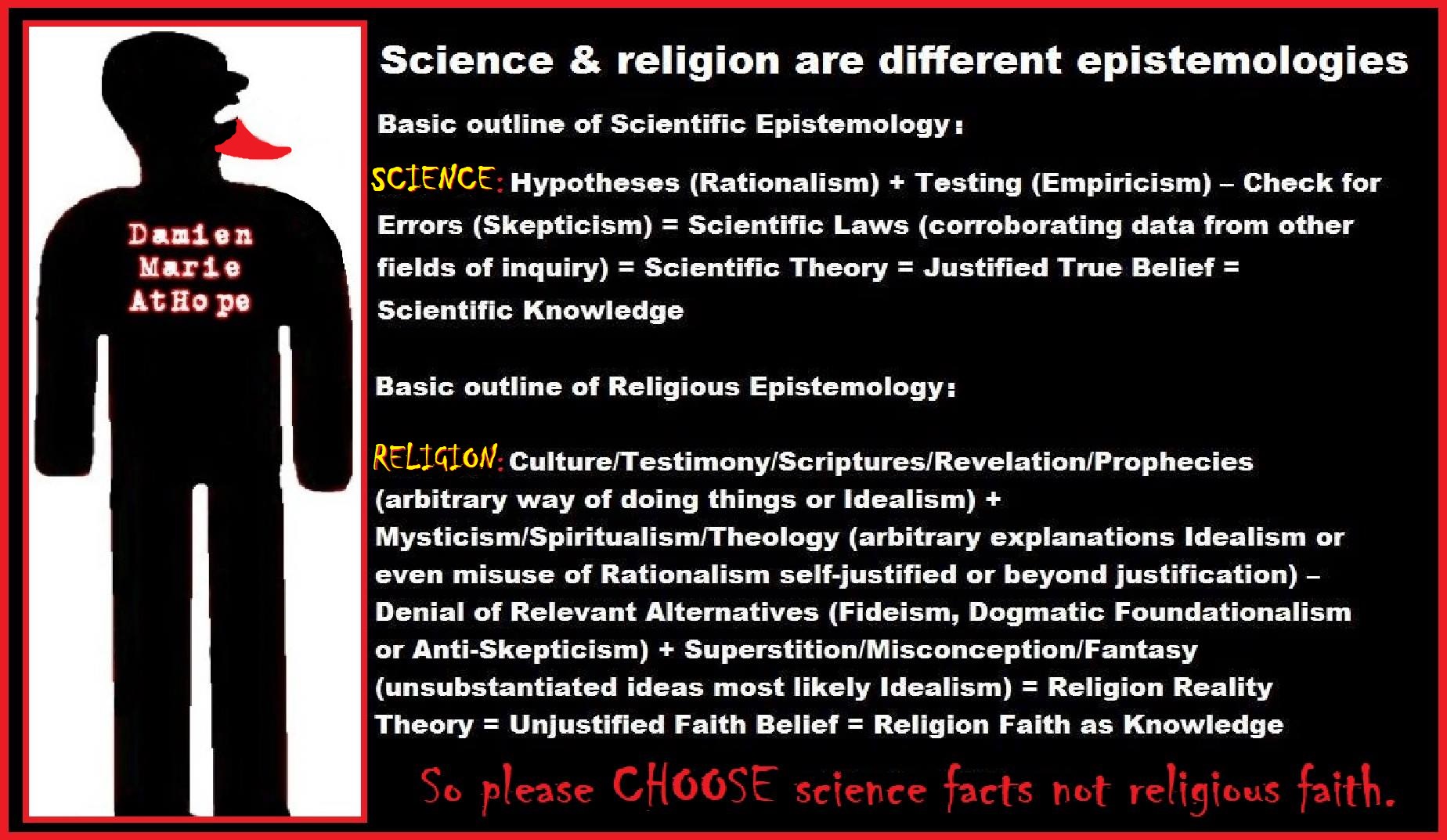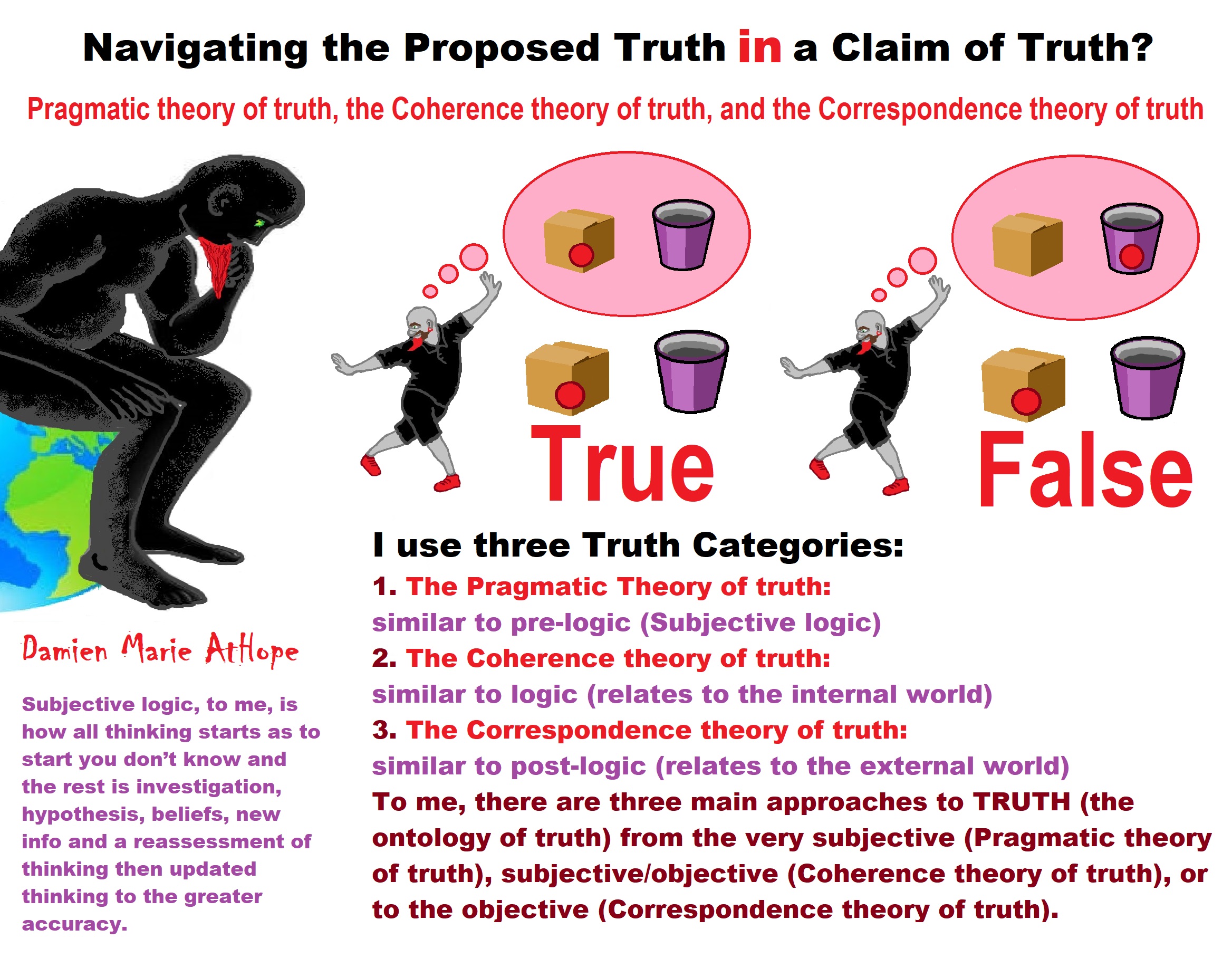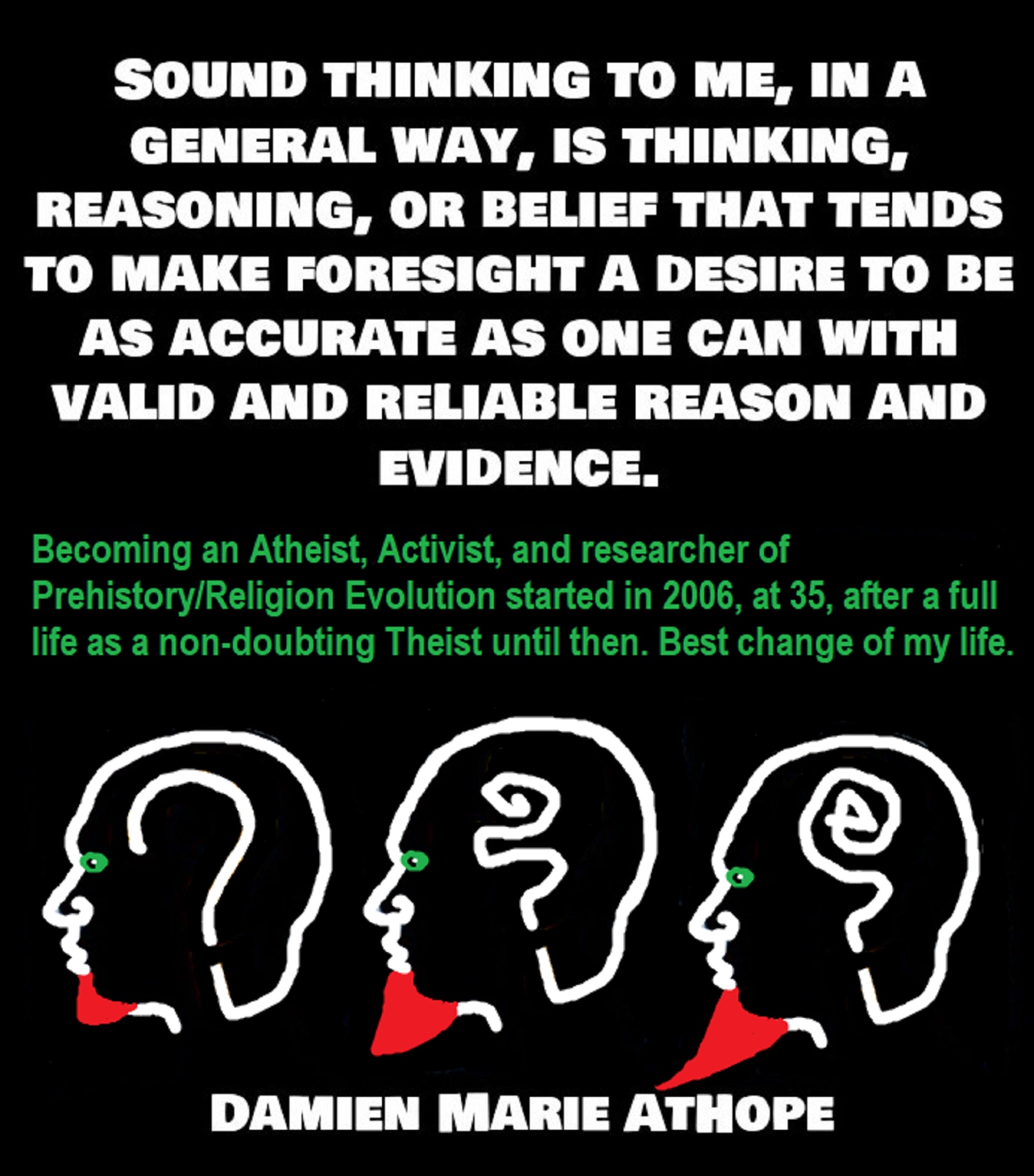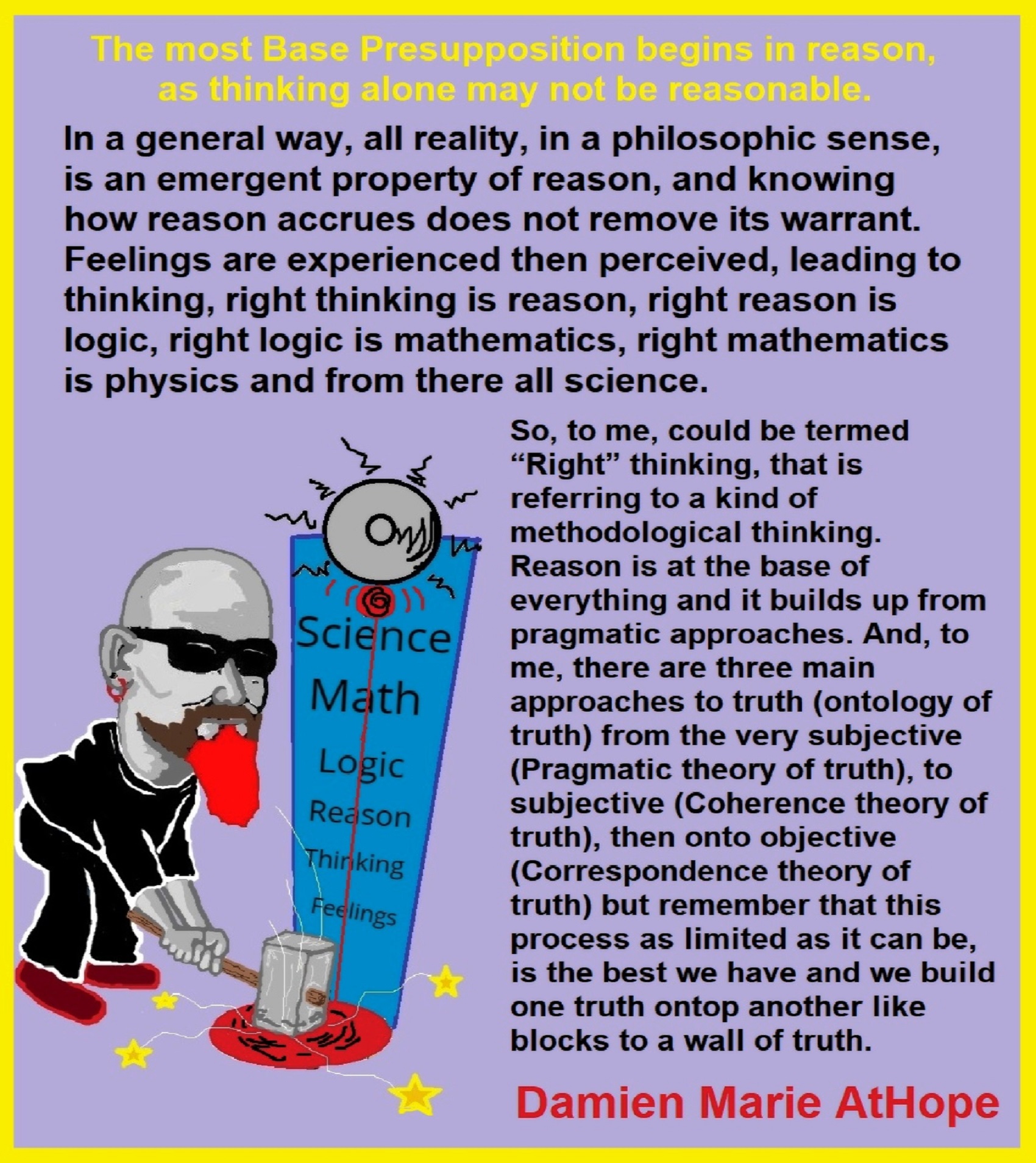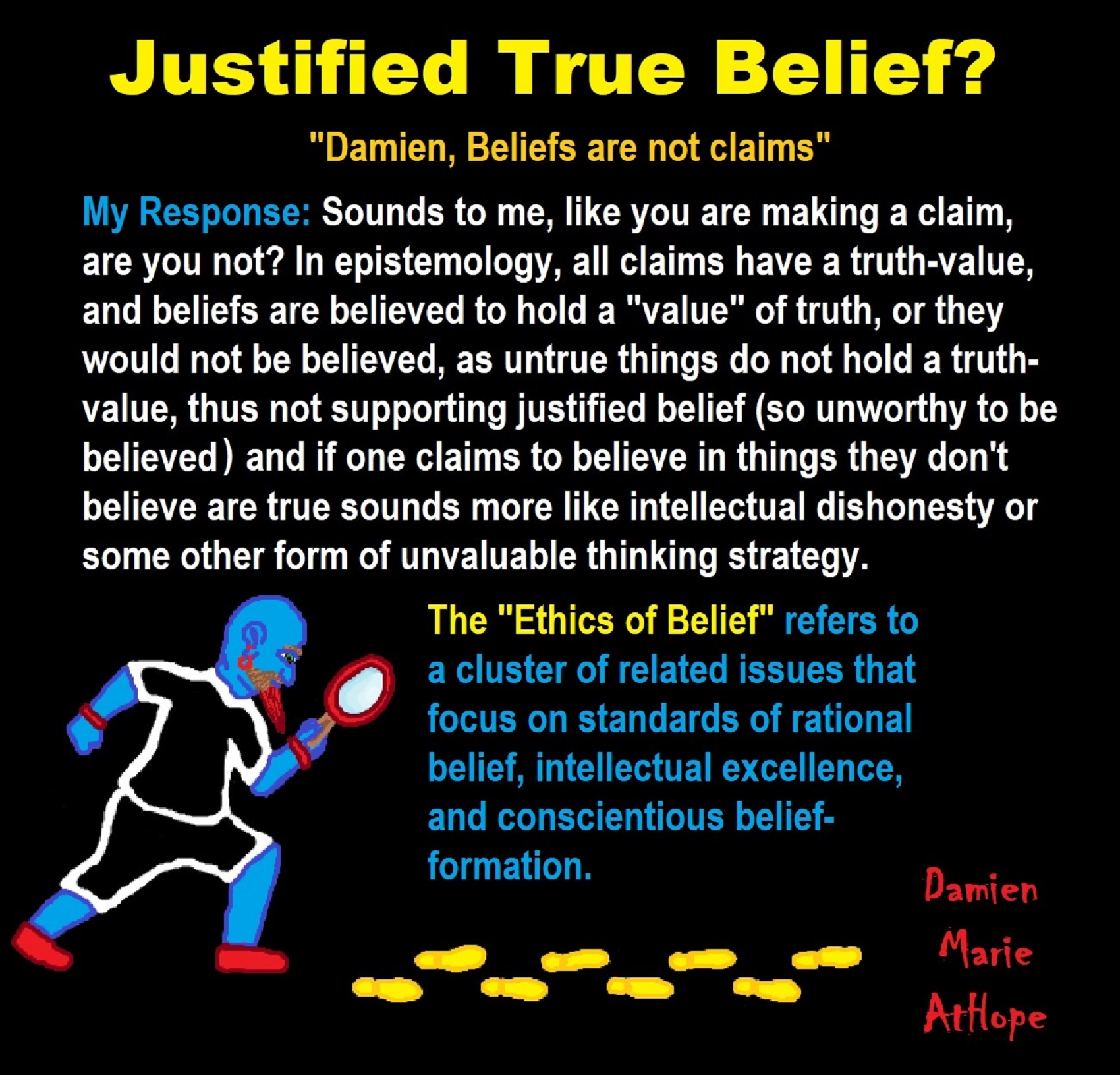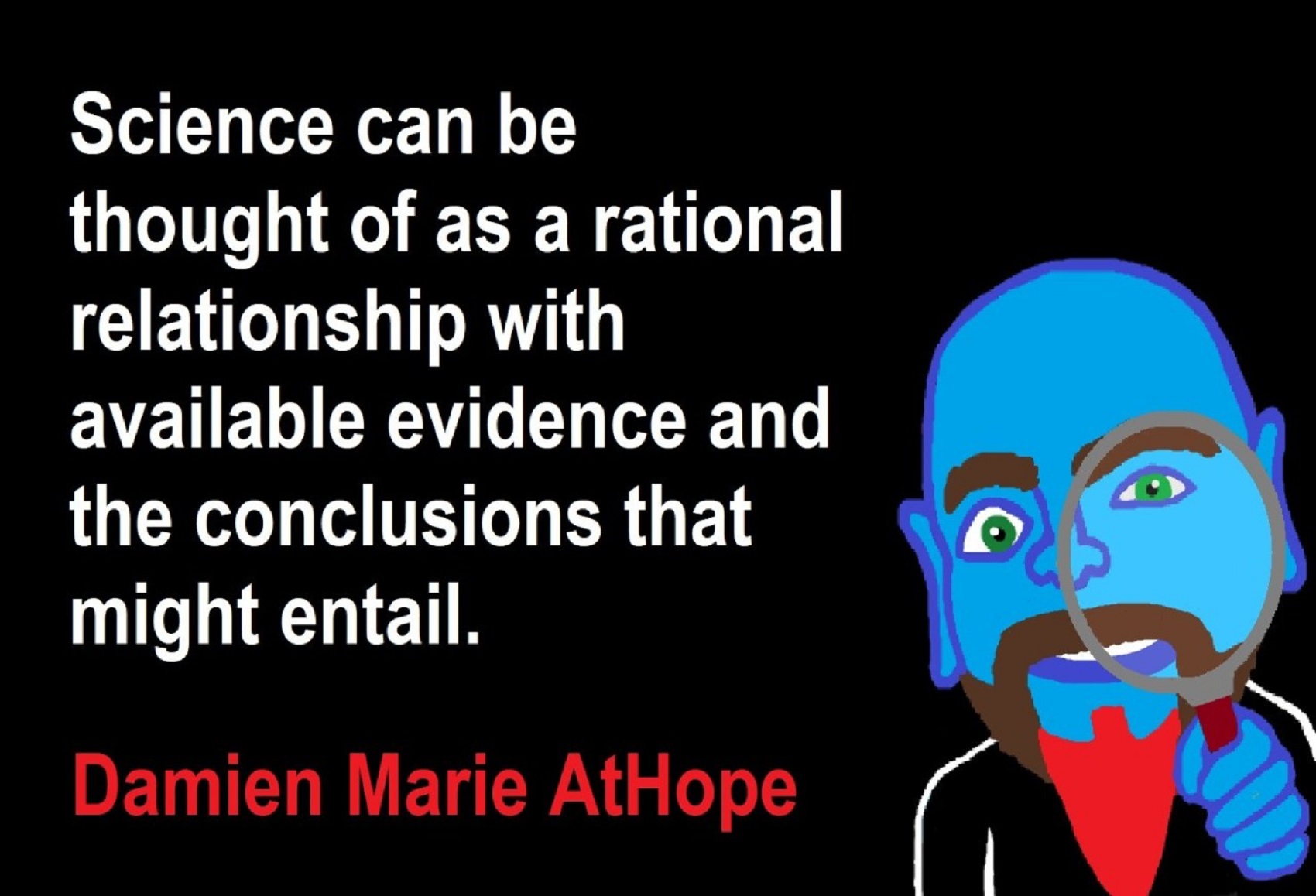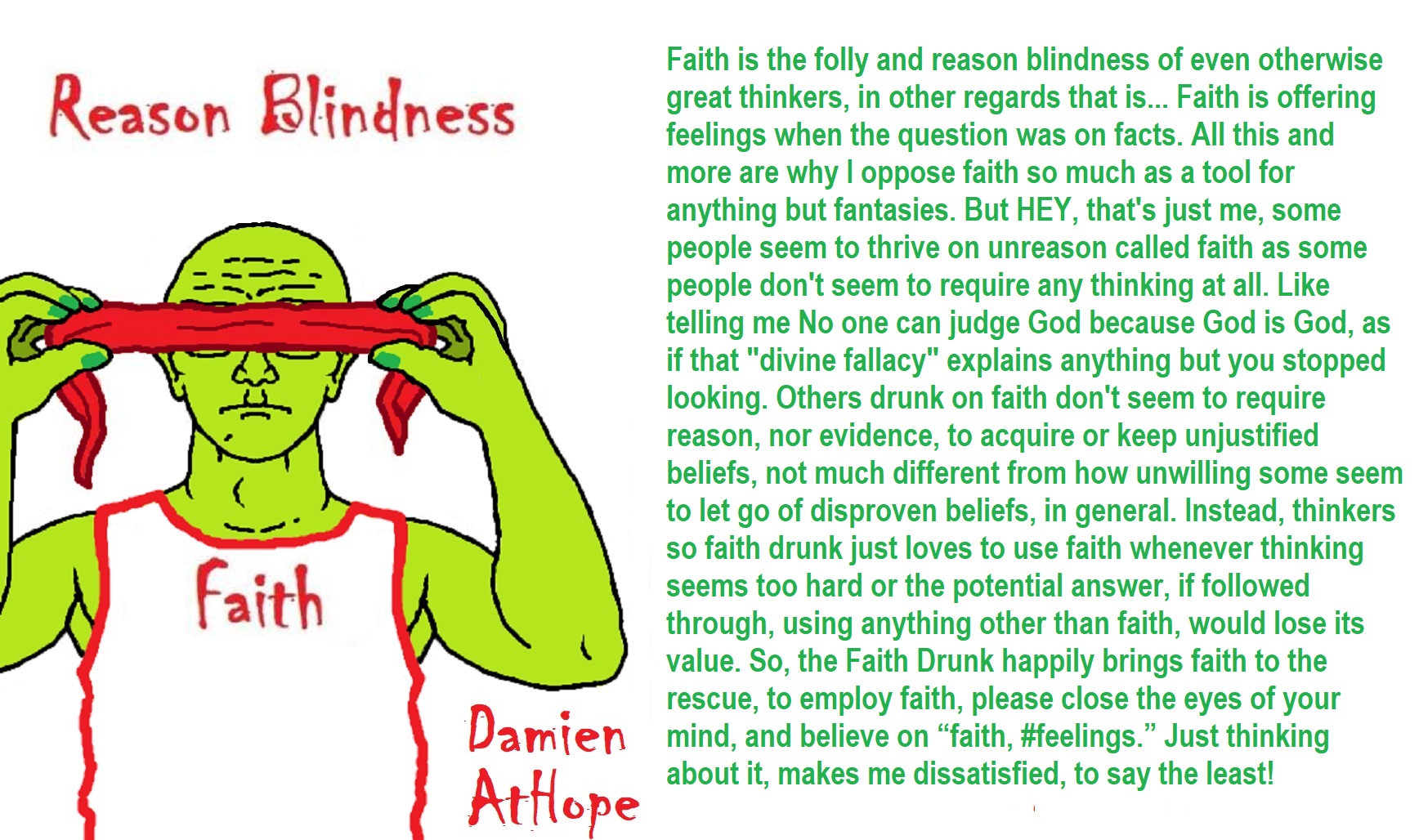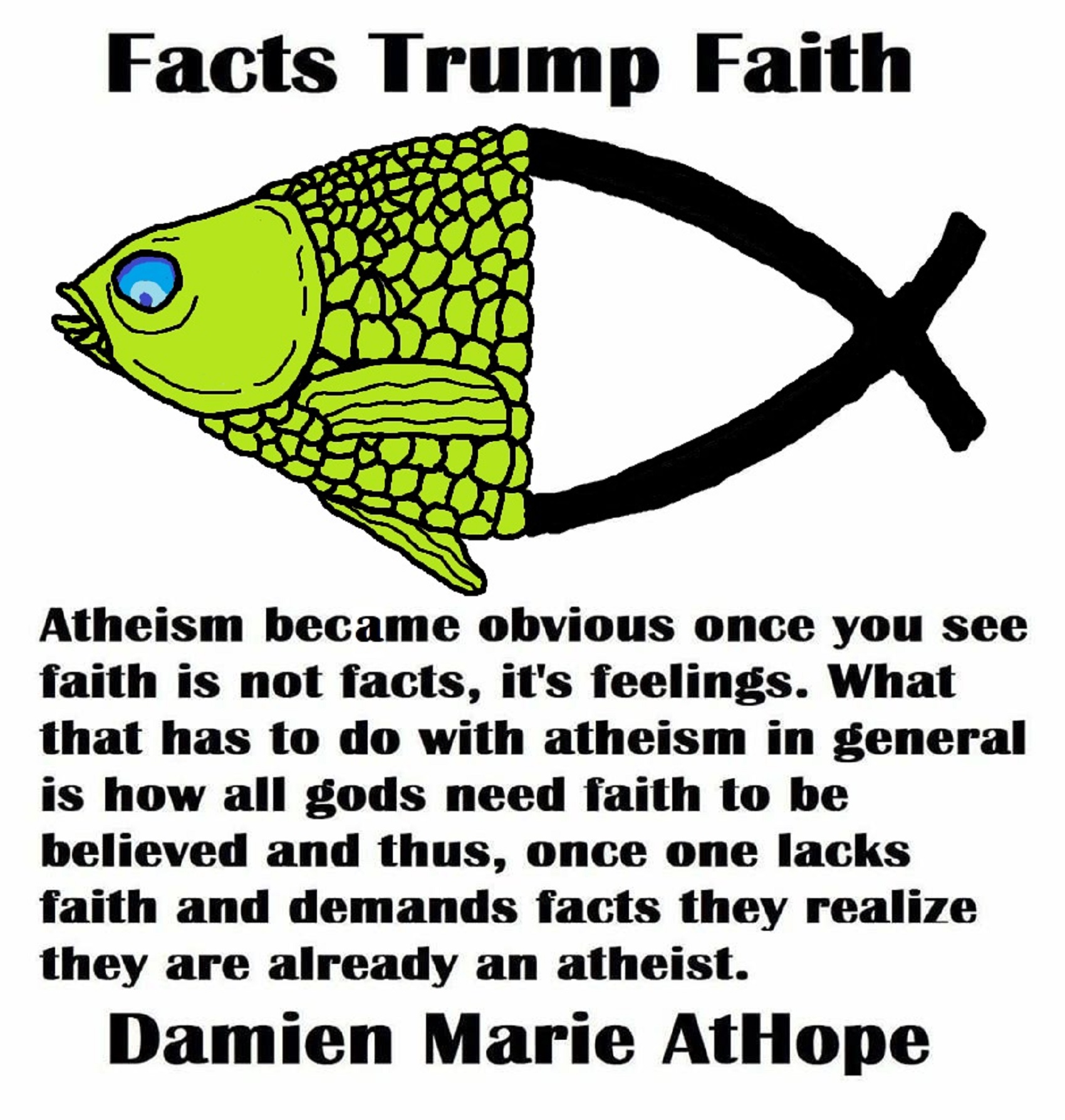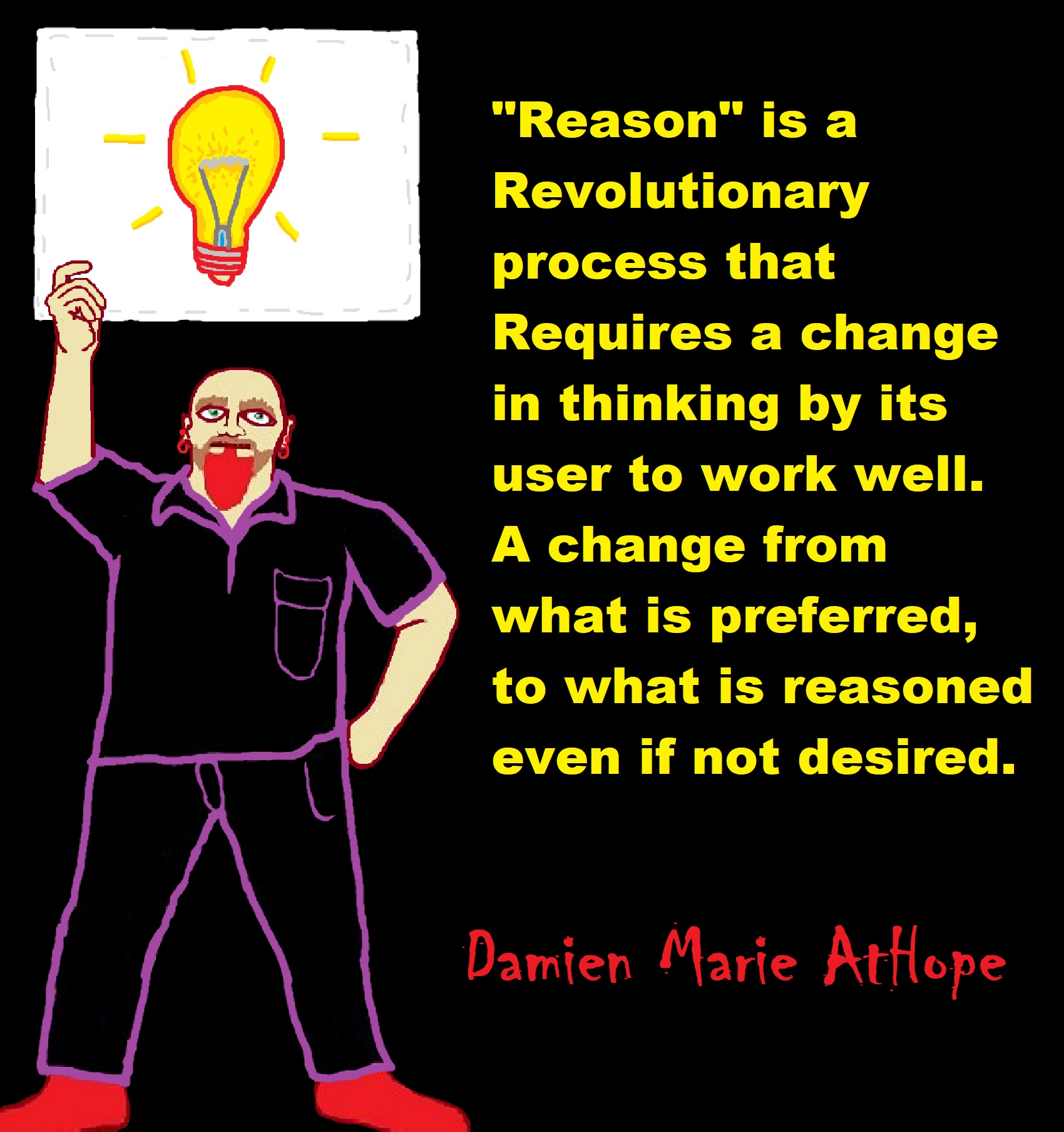
Naturalism and Logical Positivism?
*Questioner, “Damien, what’s the difference between naturalism and Logical Positivism?”
My responce, Well, to try and explain it at the simplest; to me naturalism is “what is” in discernible reality and Logical Positivism can be thought as kind of about the “limit of what is believed as available” to be true in a naturalism world. It’s more complicated but that is kind of what is different to me.
*Questioner, “How do we respond to people who say that Logical Positivism is dead and therefore scientism is a self-refuting claim?”
Logical Positivism, Naturalistic Epistemology, and the Foundations of Psychology:
“According to the standard account, logical positivism was the philosophical foundation of psychological neo-behaviorism. However, this interpretation has been questioned, suggesting that neo-behaviorism drew its philosophical inspiration from a different tradition, one more in keeping with naturalistic epistemology. Smith does not deny, however, the traditional interpretation of the philosophy of logical positivism, which sets it apart from naturalistic epistemology. Richard F. Kitchener suggests (following recent historical scholarship) that a more careful reading of the leading figure of logical positivism, Rudolph Carnap, shows an important naturalistic component in his philosophy. Hence, we must reevaluate our standard interpretation of the philosophy of logical positivism and its relation to psychological neo-behaviorism.” https://www.jstor.org/stable/27759470?seq=1#page_scan_tab_contents
“Neobehaviorism is a school of thought that posits that the study of learning and a focus on rigorous objective observational methods form the key to scientific psychology. Neobehaviorism is the second phase of behaviorism. In contrast to behaviorists, neobehaviorists tried to formalize behavioral laws and drew influence from positivists. These logical positivists believed that anything that could not be proven through science via physical observations was nonsense or metaphysics. Knowledge must be built by observations and verified by observations.” Ref
I don’t claim Logical Positivism.
My responce, I hold to “Scientific Realism” and “Metaphysical Naturalism,” Metaphysical Naturalism is also called ontological naturalism, philosophical naturalism, and scientific materialism is a worldview, which holds that there is nothing but natural elements, principles, and relations of the kind studied by the natural sciences.
*Questioner, “Isn’t that self-refuting or an a priori claim since radical empiricism can’t be prove empirically although I am a naturalist myself since there’s no reason to believe in anything supernatural. The universe is always here right, so there’s no reason to assume that the universe is noncontingent or contingent rather?”
My responce, Well, I am justified to hold that view do to the extreme success of science using methodological naturalism which supports my claims of metaphysical naturalism. I don’t think atheists have to but should have answers or its most effective if us atheists can offer answers to these hard questions. I understand that others are not as outspoken or have things thought out as detailed as me; as I am a firebrand atheist trying to actively change minds with valid and reliable reason and evidence. One thing I would say is you can read up on Naturalism as there is several kinds.
“In philosophy, naturalism is the “idea or belief that only natural (as opposed to supernatural or spiritual) laws and forces operate in the world.” Adherents of naturalism (i.e., naturalists) assert that natural laws are the rules that govern the structure and behavior of the natural universe, that the changing universe at every stage is a product of these laws. “Naturalism can intuitively be separated into an ontological and a methodological component.” “Ontological” refers to the philosophical study of the nature of reality. Some philosophers equate naturalism with materialism. For example, philosopher Paul Kurtz argues that nature is best accounted for by reference to material principles. These principles include mass, energy, and other physical and chemical properties accepted by the scientific community. Further, this sense of naturalism holds that spirits, deities, and ghosts are not real and that there is no “purpose” in nature. Such an absolute belief in naturalism is commonly referred to as metaphysical naturalism. Assuming naturalism in working methods is the current paradigm, without the unfounded consideration of naturalism as an absolute truth with philosophical entailment, called methodological naturalism.[5] The subject matter here is a philosophy of acquiring knowledge based on an assumed paradigm. With the exception of pantheists—who believe that Nature and God are one and the same thing—theists challenge the idea that nature contains all of reality. According to some theists, natural laws may be viewed as so-called secondary causes of god(s). In the 20th century, Willard Van Orman Quine, George Santayana, and other philosophers argued that the success of naturalism in science meant that scientific methods should also be used in philosophy. Science and philosophy are said to form a continuum, according to this view.” Ref
According to philosophybasics.com, “Naturalism is the belief that nature is all that exists, and that all things supernatural (including gods, spirits, souls and non-natural values) therefore do not exist. It is often called Metaphysical Naturalism or Philosophical Naturalism or Ontological Naturalism to distinguish it from Methodological Naturalism. It holds that any mental properties that exist (and hence any mental powers or beings) are causally derived from, and ontologically dependent on, systems of non-mental properties, powers or things (i.e. all minds, and all the contents and powers and effects of minds, are entirely constructed from or caused by natural phenomena). Some naturalistic beliefs claim that what is commonly called supernatural is, in fact, part of the natural world. Likewise, there are different varieties of Metaphysical Naturalism, but they are usually separated into two general categories: *Physicalism (or Materialism): The belief that everything which exists is no more extensive than its physical properties, and that the only existing substance is physical. Thus, everything that has ever been observed is in actual fact the product of fundamentally mindless arrangements or interactions of matter-energy in space-time, and it is unreasonable to believe anything else exists. *Pluralism: The belief that reality consists of many different substances (including abstract objects and universals) in addition to those fundamentally mindless arrangements or interactions of matter-energy in space-time. Moreover, Naturalism is inconsistent with any kind of Theism and compatible with Atheism. The direct opposite of Naturalism is Supernaturalism, which accepts the existence of such things as supernatural beings, magical objects, Platonic forms or the existence of love (for example) as a cosmic force.” Ref
My responce, But yeah, my views are quite similar to Positivism, but I don’t really claim “Positivism” as I prefer metaphysical naturalism.
According to oxfordbibliographies.com,”Physicalism and Metaphysical Naturalism – Much of contemporary metaphysical work is motivated in some way by the desire to accommodate what the natural sciences, especially physics, have taught us about the world. This motivation has drawn many philosophers to endorse doctrines variously described as physicalism, materialism, or naturalism. “Physicalism” and “materialism” are often treated as interchangeable names for a single doctrine that may be crudely expressed as the claim that everything that exists is physical. By contrast, “naturalism” is widely acknowledged to be ambiguous between at least two sorts of positions. Epistemological naturalism is the view that knowledge is best gained (perhaps: can only be gained) via the methods of science (perhaps: the methods of natural science). Metaphysical naturalism is often thought of as making a global ontological claim akin to physicalism—perhaps the claim that everything that exists is natural, where some explication of “natural” is evidently crucial. (“Naturalism” without qualification shall here be understood as referring to the metaphysical doctrine.) It is often suspected on the part of non-naturalists that a self-declared naturalist is really just a physicalist under a different label. Both doctrines are thought to have significant consequences for our understanding of the world, especially human aspects of the world and the nature of mentality. They may also have implications for our understanding of moral properties, abstract objects, the possibility of knowledge, and other familiar items of philosophical investigation. A global metaphysical theory of this sort induces what are known (following Frank Jackson in From Metaphysics to Ethics; see Jackson 1998, cited under Central Monographs) as “placement location problems”: the problem of locating in a wholly physical or natural world those things that seem not to be wholly physical or natural. Debates about these metaphysical doctrines often focus on the prospects for solving such placement problems, where a failure may justify an elimination of the thing in question or a rejection of the global doctrine. Other debates focus on the proper formulation and understanding of the doctrines (e.g., what is meant by calling an entity physical?), whether and how it might be justified (e.g., what in the development of natural science could justify the claim that everything is natural?), and its implications for science and the proper treatment of placement problems (e.g., does physicalism require all sciences to reduce to physics?).” Ref
Logical Positivism
“Logical positivism, later called logical empiricism, and both of which together are also known as neopositivism, was a movement in Western philosophy whose central thesis was the verification principle (also known as the verifiability criterion of meaning). This theory of knowledge asserted that only statements verifiable through direct observation or logical proof are meaningful in terms of conveying truth value, information, or factual content. Starting in the late 1920s, groups of philosophers, scientists, and mathematicians formed the Berlin Circle and the Vienna Circle, which, in these two cities, would propound the ideas of logical positivism.” ref
“Logical positivism, (Also known as logical empiricism, logical neopositivism, neopositivism). A school of philosophy which arose in Austria and Germany during 1920s, primarily concerned with the logical analysis of scientific knowledge. Among its members were Moritz Schlick, founder of the Vienna Circle, Rudolf Carnap, the leading figure of logical positivism, Hans Reichenbach, founder of the Berlin Circle, Herbert Feigl, Philipp Frank, Kurt Grelling, Hans Hahn, Carl Gustav Hempel, Victor Kraft, Otto Neurath, Friedrich Waismann. Logical positivists denied the soundness of metaphysics and traditional philosophy; they asserted that many philosophical problems are indeed meaningless. During 1930s the most important representatives of logical positivism emigrated to USA, where they influenced American philosophy. Until 1950s logical positivism was the leading philosophy of science; today its influence persists especially in the way of doing philosophy, in the great attention given to the analysis of scientific thought, and in the definitely acquired results of the technical researches on formal logic and the theory of probability.” ref
“Flourishing in several European centers through the 1930s, the movement sought to prevent confusion rooted in unclear language and unverifiable claims by converting philosophy into “scientific philosophy”, which, according to the logical positivists, ought to share the bases and structures of empirical sciences‘ best examples, such as Albert Einstein’s general theory of relativity. Despite its ambition to overhaul philosophy by studying and mimicking the extant conduct of empirical science, logical positivism became erroneously stereotyped as a movement to regulate the scientific process and to place strict standards on it.” ref
“After World War II, the movement shifted to a milder variant, logical empiricism, led mainly by Carl Hempel, who, during the rise of Nazism, had immigrated into the United States. In the ensuing years, the movement’s central premises, still unresolved, were heavily criticized by leading philosophers, particularly Willard van Orman Quine and Karl Popper, and even, within the movement itself, by Hempel. The 1962 publication of Thomas Kuhn‘s landmark book The Structure of Scientific Revolutions dramatically shifted academic philosophy’s focus. In 1967 philosopher John Passmore pronounced logical positivism “dead, or as dead as a philosophical movement ever becomes.” ref
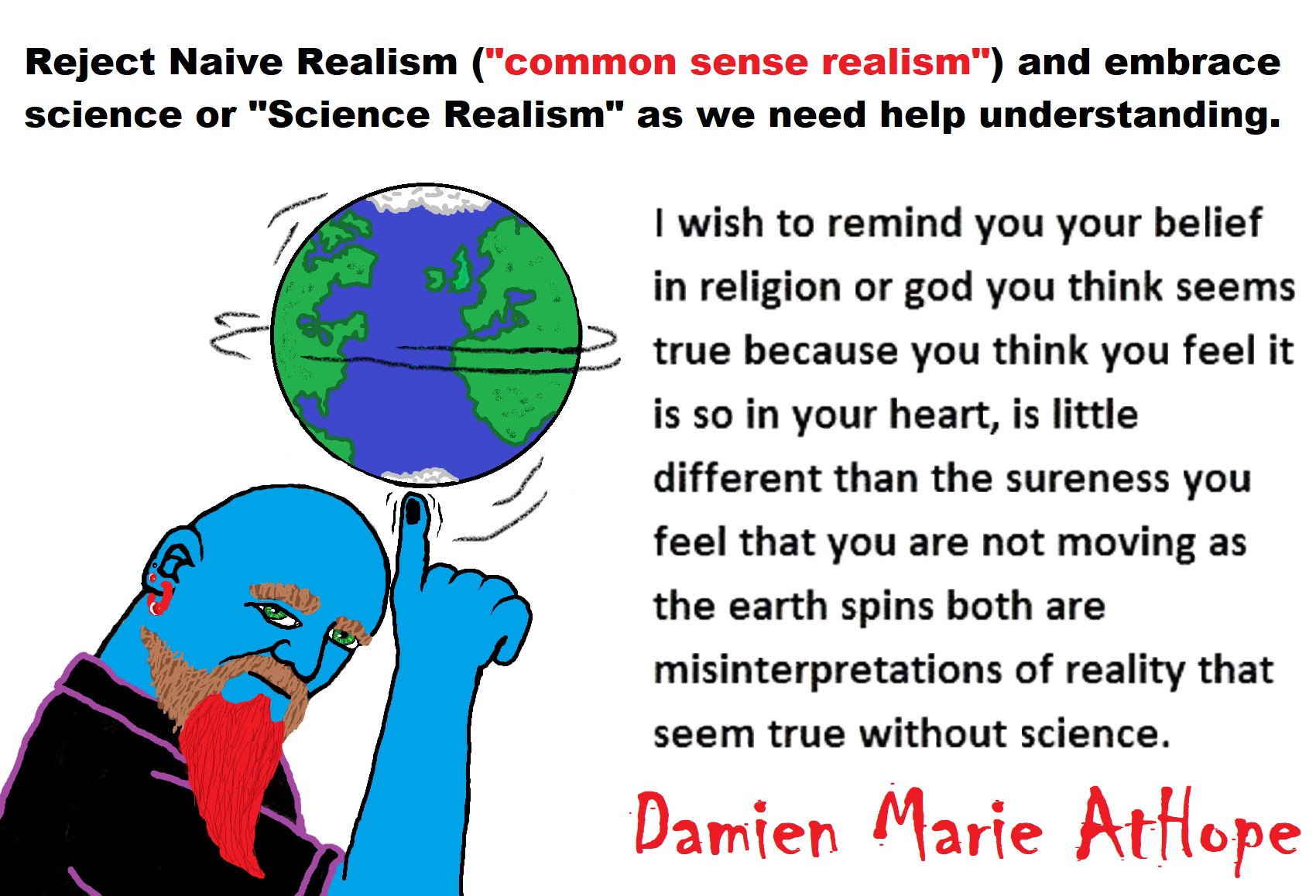
Scientific Realism
“Debates about scientific realism are closely connected to almost everything else in the philosophy of science, for they concern the very nature of scientific knowledge. Scientific realism is a positive epistemic attitude toward the content of our best theories and models, recommending belief in both observable and unobservable aspects of the world described by the sciences. This epistemic attitude has important metaphysical and semantic dimensions, and these various commitments are contested by a number of rival epistemologies of science, known collectively as forms of scientific antirealism. This article explains what scientific realism is, outlines its main variants, considers the most common arguments for and against the position, and contrasts it with its most important antirealist counterparts.” ref
“Scientific realism is the view that the universe described by science is real regardless of how it may be interpreted. Within philosophy of science, this view is often an answer to the question “how is the success of science to be explained?” The discussion on the success of science in this context centers primarily on the status of unobservable entities apparently talked about by scientific theories. Generally, those who are scientific realists assert that one can make valid claims about unobservables (viz., that they have the same ontological status) as observables, as opposed to instrumentalism. Scientific realism involves two basic positions. First, it is a set of claims about the features of an ideal scientific theory; an ideal theory is the sort of theory science aims to produce. Second, it is the commitment that science will eventually produce theories very much like an ideal theory and that science has done pretty well thus far in some domains. It is important to note that one might be a scientific realist regarding some sciences while not being a realist regarding others.” ref
The Three Dimensions of Realist Commitment
“The description of scientific realism as a positive epistemic attitude toward theories, including parts putatively concerning the unobservable, is a kind of shorthand for more precise commitments (Kukla 1998: ch. 1; Niiniluoto 1999: ch. 1; Psillos 1999: Introduction; Chakravartty 2007a: ch. 1). Traditionally, realism more generally is associated with any position that endorses belief in the reality of something. Thus, one might be a realist about one’s perceptions of tables and chairs (sense datum realism), or about tables and chairs themselves (external world realism), or about mathematical entities such as numbers and sets (mathematical realism), and so on. Scientific realism is a realism about whatever is described by our best scientific theories—from this point on, “realism” here denotes scientific realism. But what, more precisely, is that? In order to be clear about what realism in the context of the sciences amounts to, and to differentiate it from some important antirealist alternatives, it is useful to understand it in terms of three dimensions: a metaphysical (or ontological) dimension; a semantic dimension; and an epistemological dimension.” ref
“Metaphysically, realism is committed to the mind-independent existence of the world investigated by the sciences. This idea is best clarified in contrast with positions that deny it. For instance, it is denied by any position that falls under the traditional heading of “idealism”, including some forms of phenomenology, according to which there is no world external to and thus independent of the mind. This sort of idealism, however, though historically important, is rarely encountered in contemporary philosophy of science. More common rejections of mind-independence stem from neo-Kantian views of the nature of scientific knowledge, which deny that the world of our experience is mind-independent, even if (in some cases) these positions accept that the world in itself does not depend on the existence of minds. The contention here is that the world investigated by the sciences—as distinct from “the world in itself” (assuming this to be a coherent distinction)—is in some sense dependent on the ideas one brings to scientific investigation, which may include, for example, theoretical assumptions and perceptual training. It is important to note in this connection that human convention in scientific taxonomy is compatible with mind-independence. For example, though Psillos (1999: xix) ties realism to a “mind-independent natural-kind structure” of the world, Chakravartty (2007a: ch. 6) argues that mind-independent properties are often conventionally grouped into kinds (see also Boyd 1999; Humphreys 2004: 22–25, 35–36, and cf. the “promiscuous realism” of Dupré 1993).” ref
“Semantically, realism is committed to a literal interpretation of scientific claims about the world. In common parlance, realists take theoretical statements at “face value”. According to realism, claims about scientific objects, events, processes, properties, and relations (I will use the term “scientific entity” as a generic term for these sorts of things henceforth), whether they be observable or unobservable, should be construed literally as having truth values, whether true or false. This semantic commitment contrasts primarily with those of certain “instrumentalist” epistemologies of science, which interpret descriptions of unobservables simply as instruments for the prediction of observable phenomena, or for systematizing observation reports. Traditionally, instrumentalism holds that claims about unobservable things have no literal meaning at all (though the term is often used more liberally in connection with some antirealist positions today). Some antirealists contend that claims involving unobservables should not be interpreted literally, but as elliptical for corresponding claims about observables.” ref
“Epistemologically, realism is committed to the idea that theoretical claims (interpreted literally as describing a mind-independent reality) constitute knowledge of the world. This contrasts with skeptical positions which, even if they grant the metaphysical and semantic dimensions of realism, doubt that scientific investigation is epistemologically powerful enough to yield such knowledge, or, as in the case of some antirealist positions, insist that it is only powerful enough to yield knowledge regarding observables. The epistemological dimension of realism, though shared by realists generally, is sometimes described more specifically in contrary ways. For example, while many realists subscribe to the truth (or approximate truth) of theories understood in terms of some version of the correspondence theory of truth (as suggested by Fine 1986a and contested by Ellis 1988), some prefer a truthmaker account (Asay 2013) or a deflationary account of truth (Giere 1988: 82; Devitt 2005; Leeds 2007). Though most realists marry their position to the successful reference of theoretical terms, including those for unobservable entities (Boyd 1983, and as described by Laudan 1981), some deny that this is a requirement (Cruse & Papineau 2002; Papineau 2010). Amidst these differences, however, a general recipe for realism is widely shared: our best scientific theories give true or approximately true descriptions of observable and unobservable aspects of a mind-independent world.” ref
“Scientific realism is related to much older philosophical positions including rationalism and metaphysical realism. However, it is a thesis about science developed in the twentieth century. Portraying scientific realism in terms of its ancient, medieval, and early modern cousins is at best misleading. Scientific realism is developed largely as a reaction to logical positivism. Logical positivism was the first philosophy of science in the twentieth century and the forerunner of scientific realism, holding that a sharp distinction can be drawn between theoretical terms and observational terms, the latter capable of semantic analysis in observational and logical terms.” ref
“Logical positivism encountered difficulties with:
- The verificationist theory of meaning—see Hempel (1950).
- Troubles with the analytic-synthetic distinction—see Quine (1950).
- The theory-ladenness of observation—see Hanson (1958) Kuhn (1970) and Quine (1960).
- Difficulties moving from the observationality of terms to observationality of sentences—see Putnam (1962).
- The vagueness of the observational-theoretical distinction—see G. Maxwell (1962).” ref
“These difficulties for logical positivism suggest, but do not entail, scientific realism, and led to the development of realism as a philosophy of science. Realism became the dominant philosophy of science after positivism. Bas van Fraassen in his book The Scientific Image (1980) developed constructive empiricism as an alternative to realism. He argues against scientific realism that scientific theories do not aim for truth about unobservable entities. Responses to van Fraassen have sharpened realist positions and led to some revisions of scientific realism.” ref
No Miracles Argument
“One of the main arguments for scientific realism centers on the notion that scientific knowledge is progressive in nature, and that it is able to predict phenomena successfully. Many scientific realists (e.g., Ernan McMullin, Richard Boyd) think the operational success of a theory lends credence to the idea that its more unobservable aspects exist, because they were how the theory reasoned its predictions. For example, a scientific realist would argue that science must derive some ontological support for atoms from the outstanding phenomenological success of all the theories using them.” ref
“Arguments for scientific realism often appeal to abductive reasoning or “inference to the best explanation” (Lipton, 2004). For instance, one argument commonly used—the “miracle argument” or “no miracles argument”—starts out by observing that scientific theories are highly successful in predicting and explaining a variety of phenomena, often with great accuracy. Thus, it is argued that the best explanation—the only explanation that renders the success of science to not be what Hilary Putnam calls “a miracle”—is the view that our scientific theories (or at least the best ones) provide true descriptions of the world, or approximately so.” ref
“Bas van Fraassen replies with an evolutionary analogy: “I claim that the success of current scientific theories is no miracle. It is not even surprising to the scientific (Darwinist) mind. For any scientific theory is born into a life of fierce competition, a jungle red in tooth and claw. Only the successful theories survive—the ones which in fact latched on to actual regularities in nature.” (The Scientific Image, 1980) Some philosophers (e.g. Colin Howson) have argued that the no miracles argument commits the base rate fallacy.” ref
Metaphysical Realism
“Metaphysical realism maintains that “whatever exists does so, and has the properties and relations it does, independently of deriving its existence or nature from being thought of or experienced.” ref
“Philosophical realism is usually not treated as a position of its own but as a stance towards other subject matters. Realism about a certain kind of thing (like numbers or morality) is the thesis that this kind of thing has mind-independent existence, i.e. that it is not just a mere appearance in the eye of the beholder.” ref
“This includes a number of positions within epistemology and metaphysics which express that a given thing instead exists independently of knowledge, thought, or understanding. This can apply to items such as the physical world, the past and future, other minds, and the self, though may also apply less directly to things such as universals, mathematical truths, moral truths, and thought itself. However, realism may also include various positions which instead reject metaphysical treatments of reality entirely.” ref
“Realism can also be a view about the properties of reality in general, holding that reality exists independent of the mind, as opposed to non-realist views (like some forms of skepticism and solipsism) which question the certainty of anything beyond one’s own mind. Philosophers who profess realism often claim that truth consists in a correspondence between cognitive representations and reality. Realists tend to believe that whatever we believe now is only an approximation of reality but that the accuracy and fullness of understanding can be improved. In some contexts, realism is contrasted with idealism. Today it is more usually contrasted with anti-realism, for example in the philosophy of science. The oldest use of the term “realism” appears in medieval scholastic interpretations and adaptations of ancient Greek philosophy.” ref
Naive or Direct Realism
“In philosophy of perception and philosophy of mind, naïve realism (also known as direct realism, perceptual realism, or common sense realism) is the idea that the senses provide us with direct awareness of objects as they really are. When referred to as direct realism, naïve realism is often contrasted with indirect realism. According to the naïve realist, the objects of perception are not merely representations of external objects, but are in fact those external objects themselves.” ref
“The naïve realist is typically also a metaphysical realist, holding that these objects continue to obey the laws of physics and retain all of their properties regardless of whether or not there is anyone to observe them. They are composed of matter, occupy space, and have properties, such as size, shape, texture, smell, taste, and color, that are usually perceived correctly. The indirect realist, by contrast, holds that the objects of perception are simply representations of reality based on sensory inputs, and thus adheres to the primary/secondary quality distinction in ascribing properties to external objects.” ref
“In addition to indirect realism, naïve realism can also be contrasted with some forms of idealism, which claim that no world exists apart from mind-dependent ideas, and some forms of philosophical skepticism, which say that we cannot trust our senses or prove that we are not radically deceived in our beliefs; that our conscious experience is not of the real world but of an internal representation of the world.” ref
Problems with the Indirect Theory
“A problem with representationalism is that if simple data flow and information processing is assumed then something in the brain must be interpreting incoming data. This something is often described as a homunculus, although the term homunculus is also used to imply an entity that creates a continual regress, and this need not be implied. This suggests that some phenomenon other than simple data flow and information processing is involved in perception. This is more of an issue now than it was for rationalist philosophers prior to Newton, such as Descartes, for whom physical processes were poorly defined. Descartes held that there is a “homunculus” in the form of the soul, belonging to a form of natural substance known as res cogitans that obeyed different laws from those obeyed by solid matter (res extensa). Although Descartes’ duality of natural substances may have echoes in modern physics (Bose and Fermi statistics) no agreed account of ‘interpretation’ has been formulated. Thus representationalism remains an incomplete description of perception. Aristotle realized this and simply proposed that ideas themselves (representations) must be aware—in other words that there is no further transfer of sense impressions beyond ideas.” ref
“A potential difficulty with representational realism is that, if we only have knowledge of representations of the world, how can we know that they resemble in any significant way the objects to which they are supposed to correspond? Any creature with a representation in its brain would need to interact with the objects that are represented to identify them with the representation. This difficulty would seem reasonably to be covered by the learning by exploration of the world that goes on throughout life. However, there may still be a concern that if the external world is only to be inferred, its ‘true likeness’ might be quite different from our idea of it. The representational realist would answer to this that “true likeness” is an intuitive concept that falls in the face of logic, since a likeness must always depend on the way in which something is considered.” ref
“A semantic difficulty may arise when considering reference in representationalism. If a person says “I see the Eiffel Tower” at a time when they are indeed looking at the Eiffel Tower, to what does the term “Eiffel Tower” refer? The direct realist might say that in the representational account people do not really see the tower but rather ‘see’ the representation. However, this is a distortion of the meaning of the word “see” which the representationalist does not imply. For the representationalist the statement refers to the Eiffel Tower, which implicitly is experienced in the form of a representation. The representationalist does not imply that when a person refers to the Eiffel Tower, they are referring to their sense experience, and when another person refers to the Tower, they are referring to their sense experience.” ref
Selective Optimism/Skepticism
“If, nevertheless, there are aspects of these theories that are true (or close to the truth) and one is able to identify these aspects, one might then plausibly cast one’s realism in terms of an epistemically positive attitude toward those aspects of theories that are most worthy of epistemic commitment. The most important variants of realism to implement this strategy are explanationism, entity realism, and structural realism. Explanationists hold that a realist attitude can be justified in connection with unobservables described by our best theories precisely when appealing to those unobservables is indispensable or otherwise important to explaining why these theories are successful.” ref
For example, if one takes successful novel prediction to be a hallmark of theories worthy of realist commitment generally, then explanationism suggests that, more specifically, those aspects of the theory that are essential to the derivation of such novel predictions are the parts of the theory most worthy of realist commitment. In this vein, Kitcher (1993) draws a distinction between the “presuppositional posits” or “idle parts” of theories, and the “working posits” to which realists should commit. Psillos (1999) argues that realism can be defended by demonstrating that the success of past theories did not depend on their false components: “it is enough to show that the theoretical laws and mechanisms which generated the successes of past theories have been retained in our current scientific image. (1999: 108)
The immediate challenge to explanationism is to furnish a method with which to identify precisely those aspects of theories that are required for their success, in a way that is objective or principled enough to withstand the charge that realists are merely rationalizing post hoc, identifying the explanatorily crucial parts of past theories with aspects that have been retained in our current best theories. Another version of realism that adopts the strategy of selectivity is entity realism. On this view, realist commitment is based on a putative ability to causally manipulate unobservable entities (like electrons or gene sequences) to a high degree—for example, to such a degree that one is able to intervene in other phenomena so as to bring about certain effects.
The greater the ability to exploit one’s apparent causal knowledge of something so as to bring about (often extraordinarily precise) outcomes, the greater the warrant for belief. Belief in scientific unobservables thus described is here partnered with a degree of skepticism about scientific theories more generally, and this raises questions about whether believing in entities while withholding belief with respect to the theories that describe them is a coherent or practicable combination. Entity realism is especially compatible with and nicely facilitated by the causal theory of reference associated with Kripke (1980) and Putnam ([1975] 1985), according to which one can successfully refer to an entity despite significant or even radical changes in theoretical descriptions of its properties; this allows for stability of epistemic commitment when theories change over time. Whether the causal theory of reference can be applied successfully in this context, however, is a matter of dispute.
Structural realism is another view promoting selectivity, but in this case, it is the natures of unobservable entities that are viewed skeptically, with realism reserved for the structure of the unobservable realm, as represented by certain relations described by our best theories. All of the many versions of this position fall into one of two camps: the first emphasizes an epistemic distinction between notions of structure and nature; the second emphasizes an ontological thesis. The epistemic view holds that our best theories likely do not correctly describe the natures of unobservable entities, but do successfully describe certain relations between them. The ontic view suggests that the reason realists should aspire only to knowledge of structure is that the traditional concept of entities that stand in relations is metaphysically problematic—there are, in fact, no such things, or if there are such things, they are in some sense emergent from or dependent on their relations. One challenge facing the epistemic version is that of articulating a concept of structure that makes knowledge of it effectively distinct from that of the natures of entities. The ontological version faces the challenge of clarifying the relevant notions of emergence and/or dependence.
Pragmatism
“Pragmatism is a philosophical tradition that considers words and thought as tools and instruments for prediction, problem solving, and action, and rejects the idea that the function of thought is to describe, represent, or mirror reality. Pragmatists contend that most philosophical topics—such as the nature of knowledge, language, concepts, meaning, belief, and science—are all best viewed in terms of their practical uses and successes.” ref
‘A few of the various but often interrelated positions characteristic of philosophers working from a pragmatist approach include:
- Epistemology (justification): a coherentist theory of justification that rejects the claim that all knowledge and justified belief rest ultimately on a foundation of noninferential knowledge or justified belief. Coherentists hold that justification is solely a function of some relationship between beliefs, none of which are privileged beliefs in the way maintained by foundationalist theories of justification.
- Epistemology (truth): a deflationary or pragmatic theory of truth; the former is the epistemological claim that assertions that predicate truth of a statement does not attribute a property called truth to such a statement while the latter is the epistemological claim that assertions that predicate truth of a statement attribute the property of useful-to-believe to such a statement.
- Metaphysics: a pluralist view that there is more than one sound way to conceptualize the world and its content.
- Philosophy of science: an instrumentalist and scientific anti-realist view that a scientific concept or theory should be evaluated by how effectively it explains and predicts phenomena, as opposed to how accurately it describes objective reality.
- Philosophy of language: an anti-representationalist view that rejects analyzing the semantic meaning of propositions, mental states, and statements in terms of a correspondence or representational relationship and instead analyzes semantic meaning in terms of notions like dispositions to action, inferential relationships, and/or functional roles (e.g. behaviorism and inferentialism). Not to be confused with pragmatics, a sub-field of linguistics with no relation to philosophical pragmatism.
- Additionally, forms of empiricism, fallibilism, verificationism, and a Quinean naturalist metaphilosophy are all commonly elements of pragmatist philosophies. Many pragmatists are epistemological relativists and see this to be an important facet of their pragmatism (e.g. Joseph Margolis), but this is controversial and other pragmatists argue such relativism to be seriously misguided (e.g. Hilary Putnam, Susan Haack).” ref
Coherence Theory of Truth
“In epistemology, the coherence theory of truth regards truth as coherence within some specified set of sentences, propositions, or beliefs. The model is contrasted with the correspondence theory of truth. A positive tenet is the idea that truth is a property of whole systems of propositions and can be ascribed to individual propositions only derivatively according to their coherence with the whole. While modern coherence theorists hold that there are many possible systems to which the determination of truth may be based upon coherence, others, particularly those with strong religious beliefs, hold that the truth only applies to a single absolute system. In general, truth requires a proper fit of elements within the whole system. Very often, though, coherence is taken to imply something more than simple formal coherence. For example, the coherence of the underlying set of concepts is considered to be a critical factor in judging validity. In other words, the set of base concepts in a universe of discourse must form an intelligible paradigm before many theorists consider that the coherence theory of truth is applicable.” ref
Correspondence Theory of Truth
“In metaphysics and philosophy of language, the correspondence theory of truth states that the truth or falsity of a statement is determined only by how it relates to the world and whether it accurately describes (i.e., corresponds with) that world. Correspondence theories claim that true beliefs and true statements correspond to the actual state of affairs. This type of theory attempts to posit a relationship between thoughts or statements on one hand, and things or facts on the other. Correspondence theory is a traditional model which goes back at least to some of the ancient Greek philosophers such as Plato and Aristotle. This class of theories holds that the truth or the falsity of a representation is determined solely by how it relates to a reality; that is, by whether it accurately describes that reality. As Aristotle claims in his Metaphysics: “To say that that which is, is not, and that which is not, is, is a falsehood; therefore, to say that which is, is, and that which is not, is not, is true.” ref
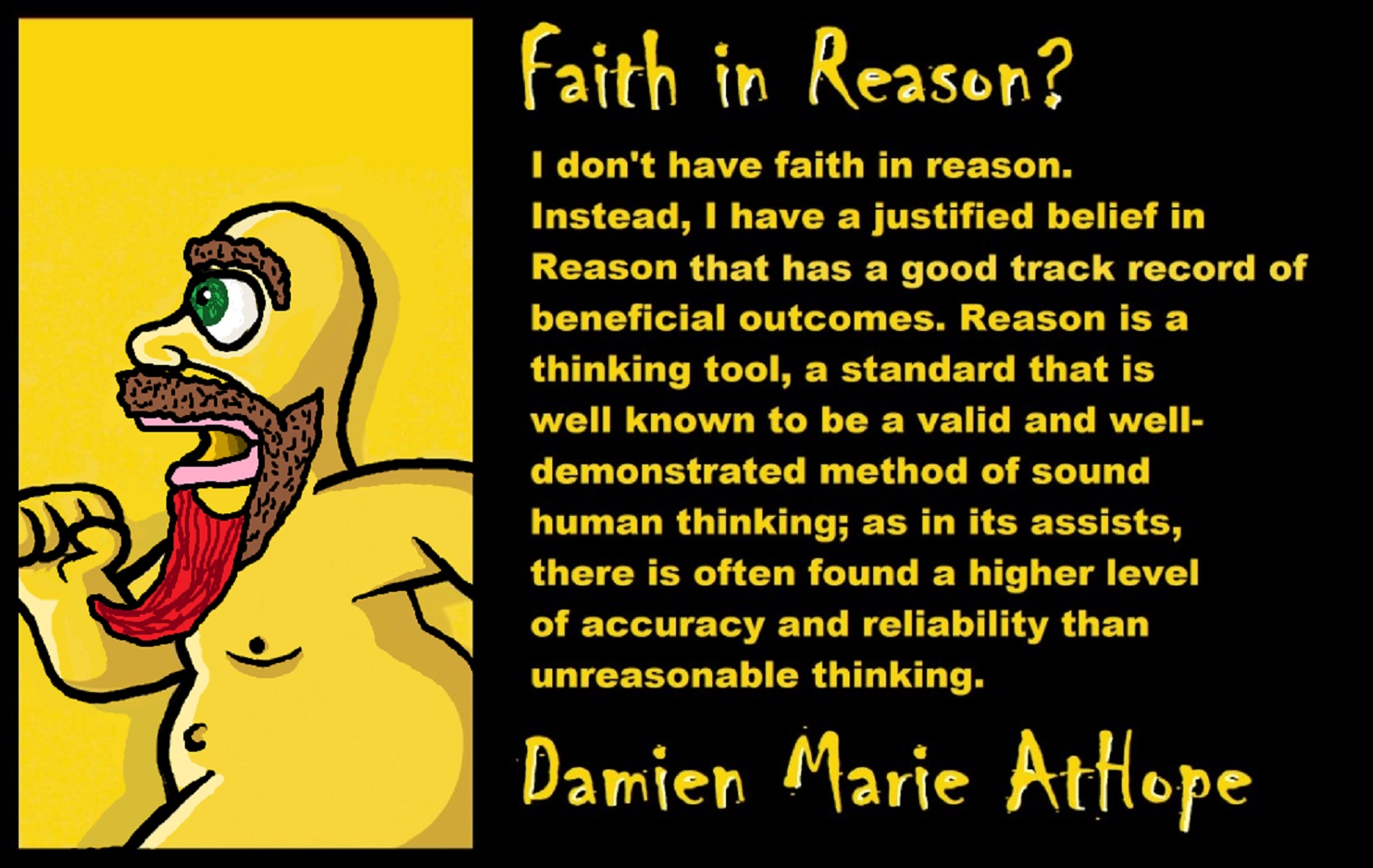
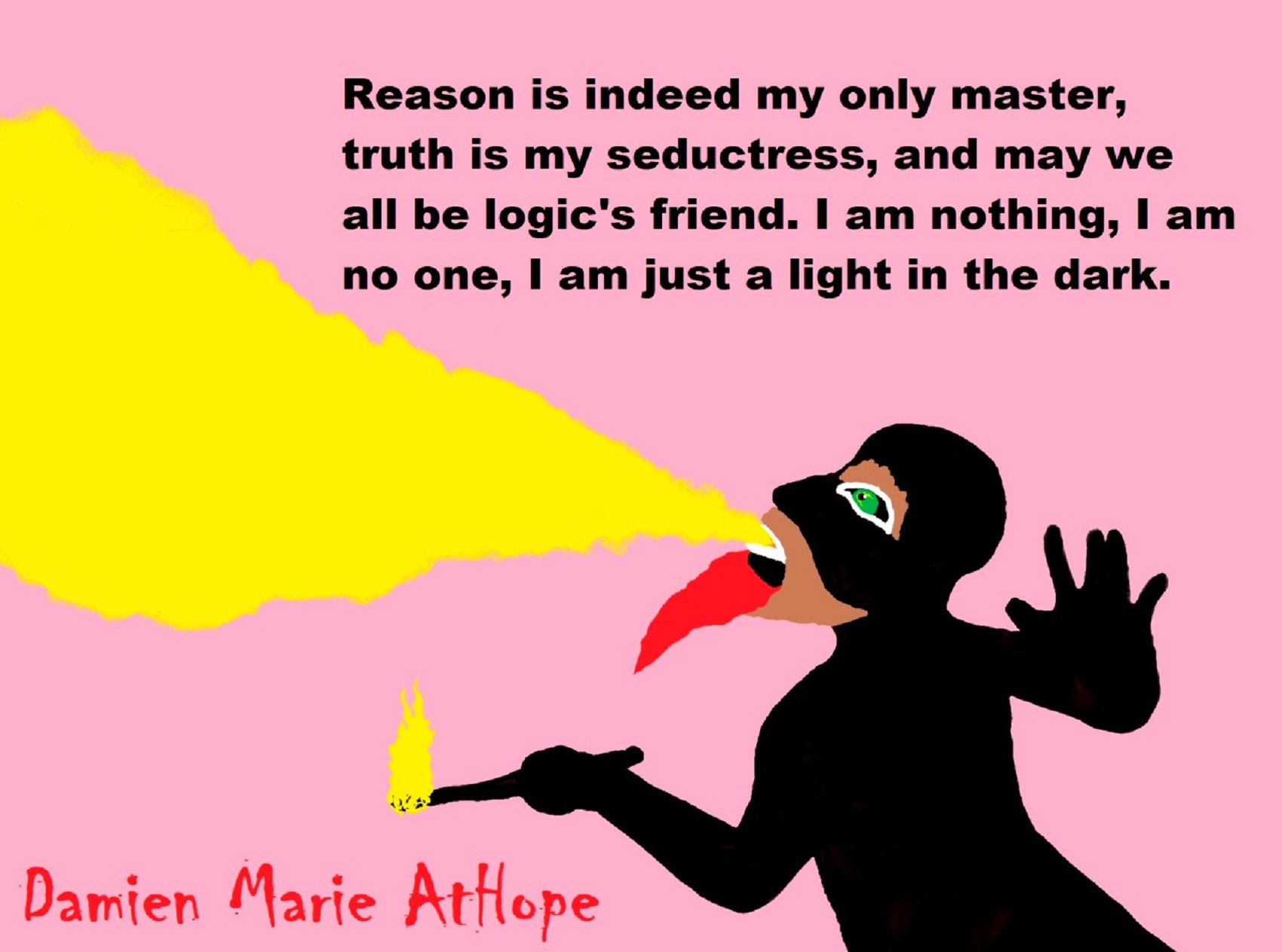
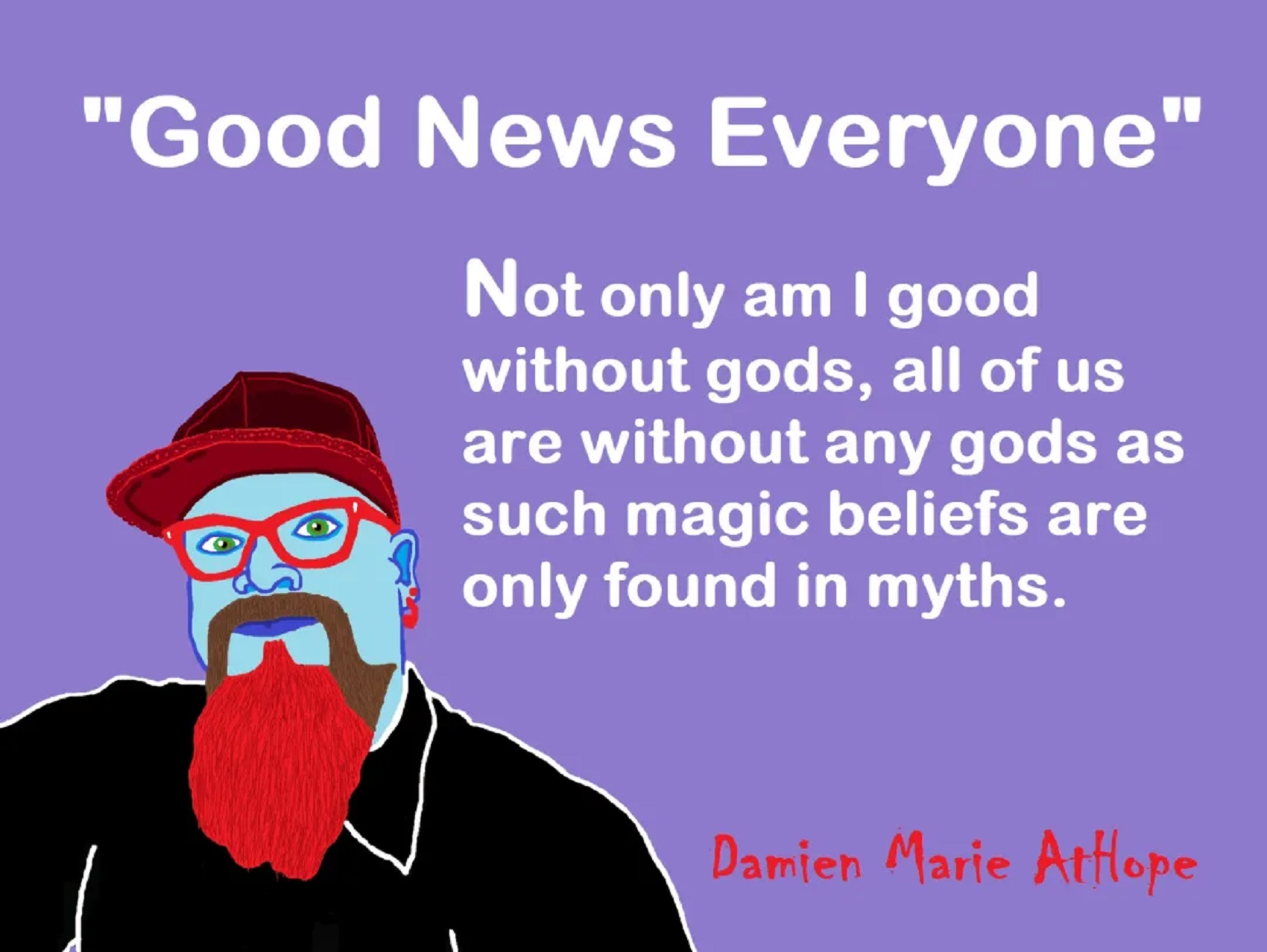
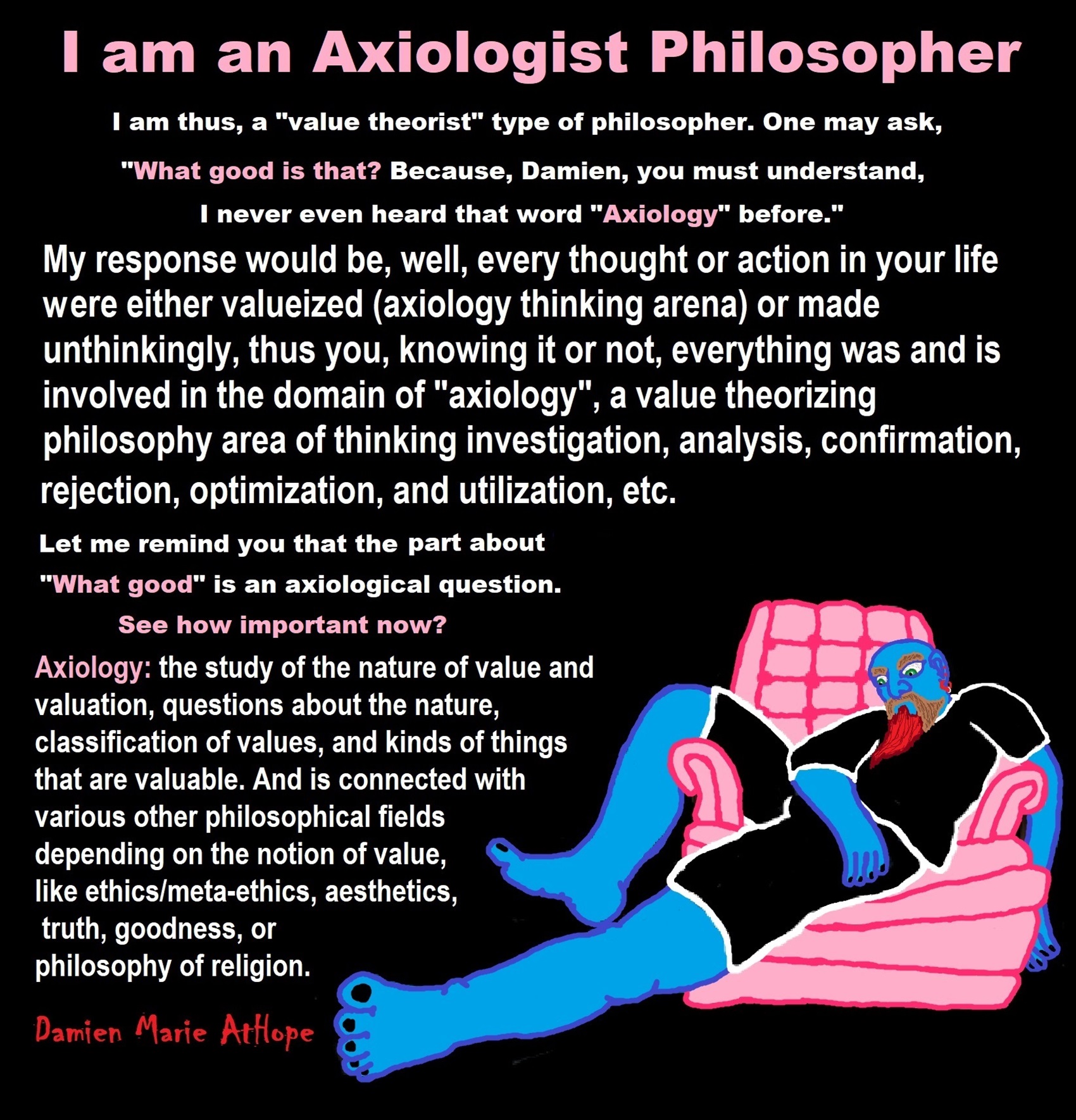

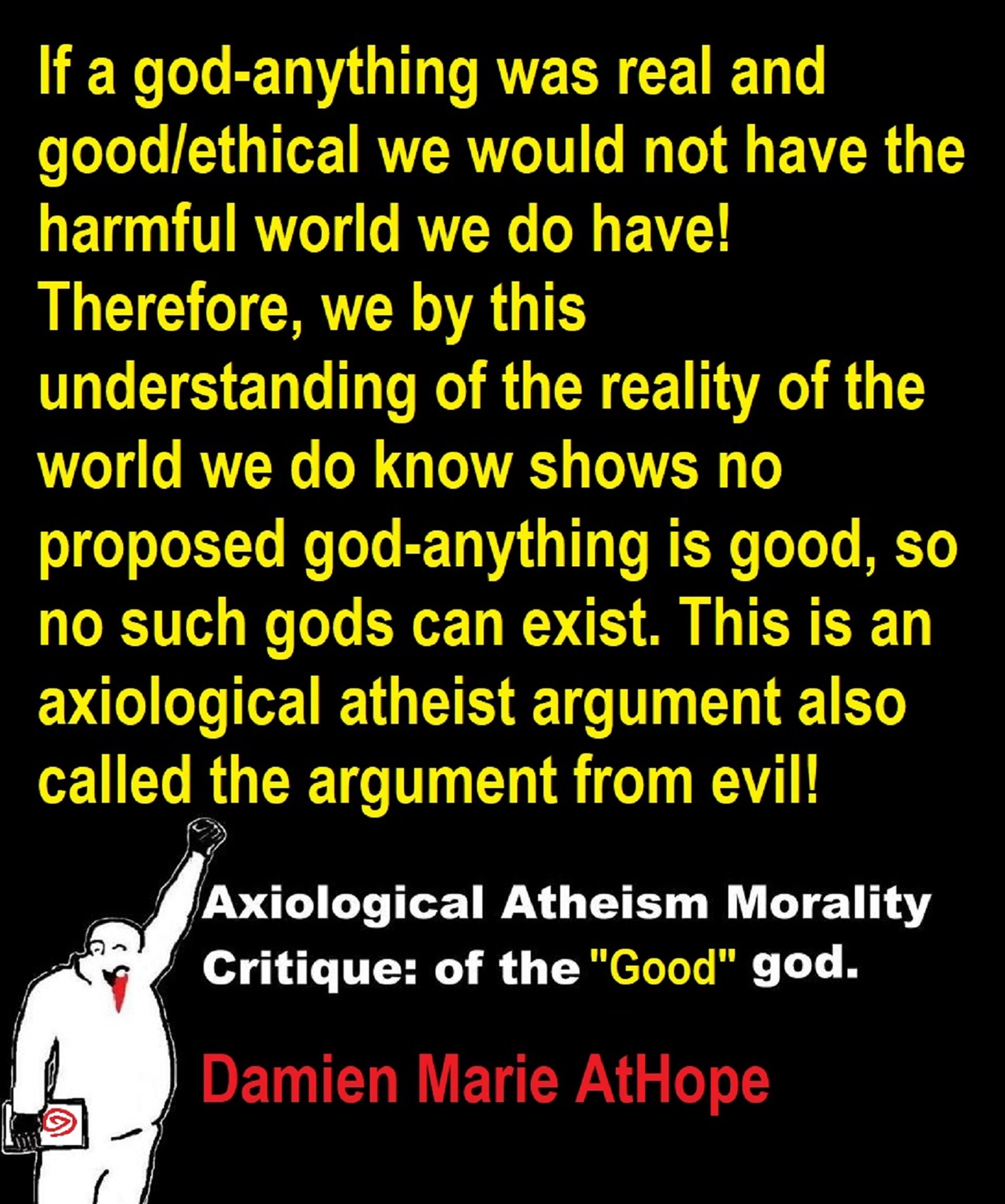
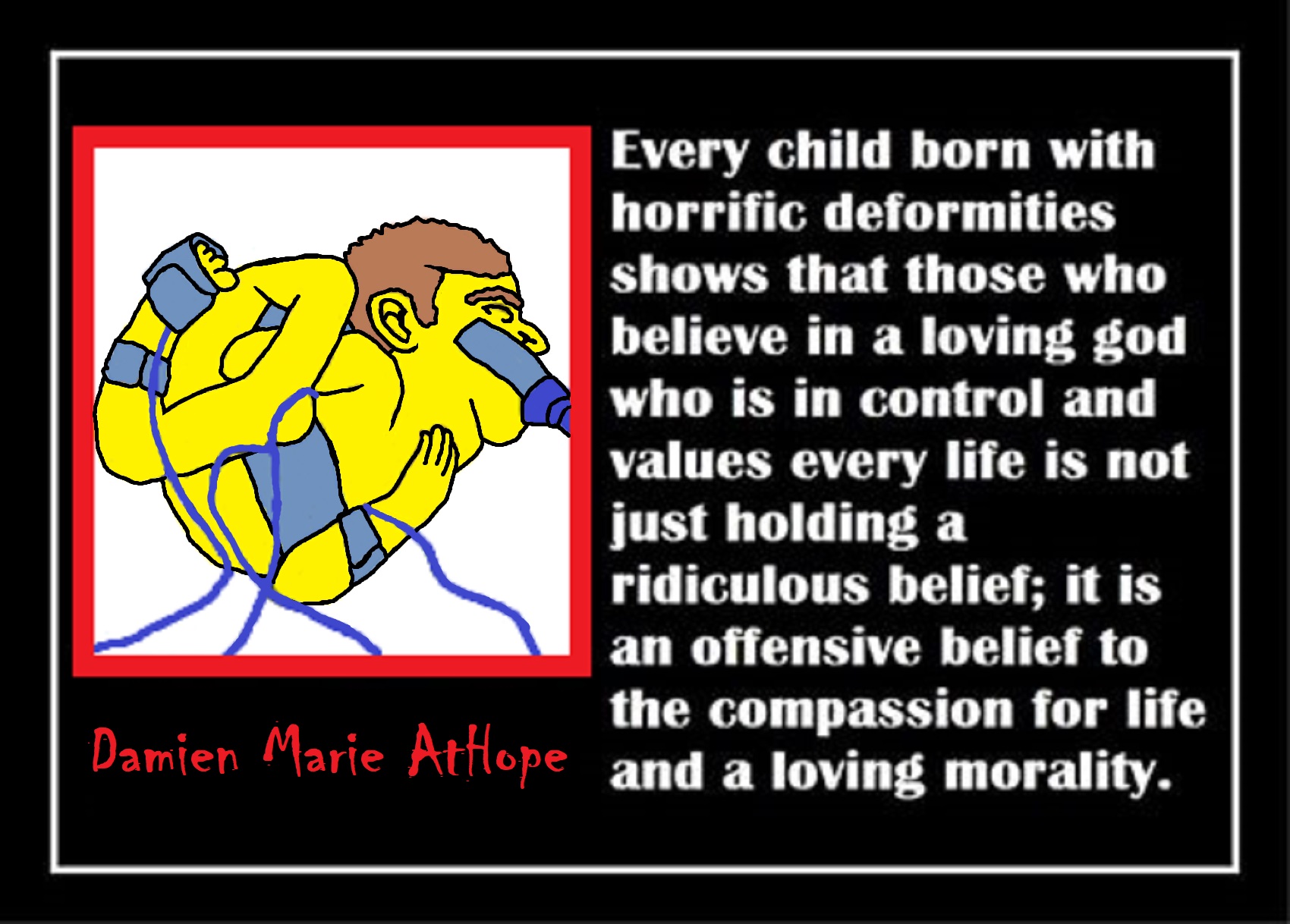
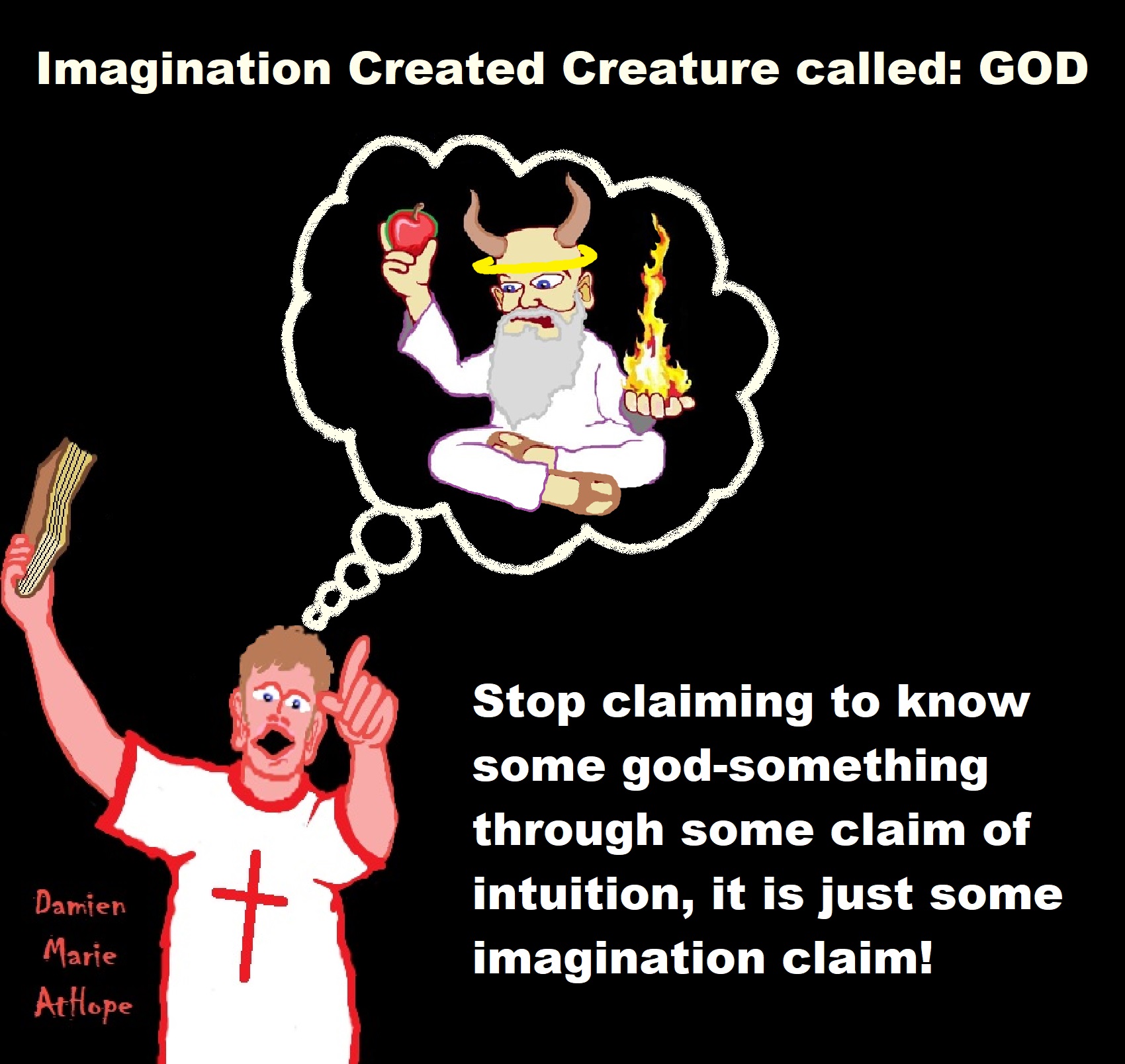
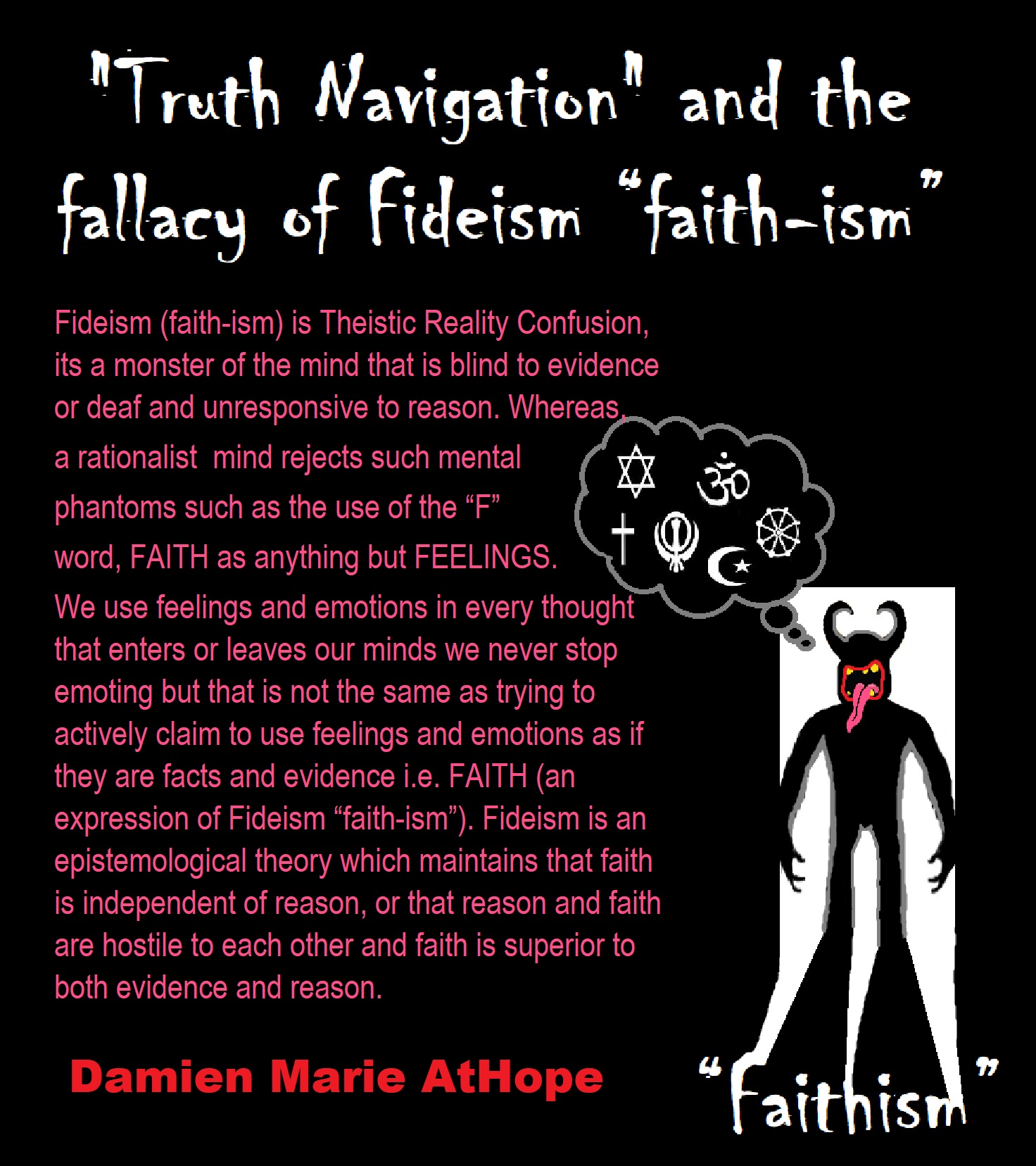



“Theists, there has to be a god, as something can not come from nothing.”
Well, thus something (unknown) happened and then there was something. This does not tell us what the something that may have been involved with something coming from nothing. A supposed first cause, thus something (unknown) happened and then there was something is not an open invitation to claim it as known, neither is it justified to call or label such an unknown as anything, especially an unsubstantiated magical thinking belief born of mythology and religious storytelling.

While hallucinogens are associated with shamanism, it is alcohol that is associated with paganism.
The Atheist-Humanist-Leftist Revolutionaries Shows in the prehistory series:
Show two: Pre-animism 300,000 years old and animism 100,000 years old: related to “Anarchism and Socialism”
Show tree: Totemism 50,000 years old: related to “Anarchism and Socialism”
Show four: Shamanism 30,000 years old: related to “Anarchism and Socialism”
Show five: Paganism 12,000 years old: related to “Anarchism and Socialism”
Show six: Emergence of hierarchy, sexism, slavery, and the new male god dominance: Paganism 7,000-5,000 years old: related to “Anarchism and Socialism” (Capitalism) (World War 0) Elite and their slaves!
Prehistory: related to “Anarchism and Socialism” the division of labor, power, rights, and recourses: VIDEO
Pre-animism 300,000 years old and animism 100,000 years old: related to “Anarchism and Socialism”: VIDEO
Totemism 50,000 years old: related to “Anarchism and Socialism”: VIDEO
Shamanism 30,000 years old: related to “Anarchism and Socialism”: VIDEO
Paganism 12,000 years old: related to “Anarchism and Socialism” (Pre-Capitalism): VIDEO
Paganism 7,000-5,000 years old: related to “Anarchism and Socialism” (Capitalism) (World War 0) Elite and their slaves: VIEDO
Paganism 5,000 years old: progressed organized religion and the state: related to “Anarchism and Socialism” (Kings and the Rise of the State): VIEDO
Paganism 4,000 years old: related to “Anarchism and Socialism” (First Moralistic gods, then the Origin time of Monotheism): VIEDO
I do not hate simply because I challenge and expose myths or lies any more than others being thought of as loving simply because of the protection and hiding from challenge their favored myths or lies.
The truth is best championed in the sunlight of challenge.
An archaeologist once said to me “Damien religion and culture are very different”
My response, So are you saying that was always that way, such as would you say Native Americans’ cultures are separate from their religions? And do you think it always was the way you believe?
I had said that religion was a cultural product. That is still how I see it and there are other archaeologists that think close to me as well. Gods too are the myths of cultures that did not understand science or the world around them, seeing magic/supernatural everywhere.
I personally think there is a goddess and not enough evidence to support a male god at Çatalhöyük but if there was both a male and female god and goddess then I know the kind of gods they were like Proto-Indo-European mythology.
This series idea was addressed in, Anarchist Teaching as Free Public Education or Free Education in the Public: VIDEO
Our 12 video series: Organized Oppression: Mesopotamian State Force and the Politics of power (9,000-4,000 years ago), is adapted from: The Complete and Concise History of the Sumerians and Early Bronze Age Mesopotamia (7000-2000 BC): https://www.youtube.com/watch?v=szFjxmY7jQA by “History with Cy“
Show #1: Mesopotamian State Force and the Politics of Power (Samarra, Halaf, Ubaid)
Show #2: Mesopotamian State Force and the Politics of Power
Show #3: Mesopotamian State Force and the Politics of Power (Uruk and the First Cities)
Show #4: Mesopotamian State Force and the Politics of Power (First Kings)
Show #5: Mesopotamian State Force and the Politics of Power (Early Dynastic Period)
Show #6: Mesopotamian State Force and the Politics of Power
Show #7: Mesopotamian State Force and the Politics of Power (Sargon and Akkadian Rule)
Show #9: Mesopotamian State Force and the Politics of Power (Gudea of Lagash and Utu-hegal)
Show #12: Mesopotamian State Force and the Politics of Power (Aftermath and Legacy of Sumer)

The “Atheist-Humanist-Leftist Revolutionaries”
Cory Johnston ☭ Ⓐ Atheist Leftist @Skepticallefty & I (Damien Marie AtHope) @AthopeMarie (my YouTube & related blog) are working jointly in atheist, antitheist, antireligionist, antifascist, anarchist, socialist, and humanist endeavors in our videos together, generally, every other Saturday.
Why Does Power Bring Responsibility?
Think, how often is it the powerless that start wars, oppress others, or commit genocide? So, I guess the question is to us all, to ask, how can power not carry responsibility in a humanity concept? I know I see the deep ethical responsibility that if there is power their must be a humanistic responsibility of ethical and empathic stewardship of that power. Will I be brave enough to be kind? Will I possess enough courage to be compassionate? Will my valor reach its height of empathy? I as everyone, earns our justified respect by our actions, that are good, ethical, just, protecting, and kind. Do I have enough self-respect to put my love for humanity’s flushing, over being brought down by some of its bad actors? May we all be the ones doing good actions in the world, to help human flourishing.
I create the world I want to live in, striving for flourishing. Which is not a place but a positive potential involvement and promotion; a life of humanist goal precision. To master oneself, also means mastering positive prosocial behaviors needed for human flourishing. I may have lost a god myth as an atheist, but I am happy to tell you, my friend, it is exactly because of that, leaving the mental terrorizer, god belief, that I truly regained my connected ethical as well as kind humanity.
Cory and I will talk about prehistory and theism, addressing the relevance to atheism, anarchism, and socialism.
At the same time as the rise of the male god, 7,000 years ago, there was also the very time there was the rise of violence, war, and clans to kingdoms, then empires, then states. It is all connected back to 7,000 years ago, and it moved across the world.
Cory Johnston: https://damienmarieathope.com/2021/04/cory-johnston-mind-of-a-skeptical-leftist/?v=32aec8db952d
The Mind of a Skeptical Leftist (YouTube)
Cory Johnston: Mind of a Skeptical Leftist @Skepticallefty
The Mind of a Skeptical Leftist By Cory Johnston: “Promoting critical thinking, social justice, and left-wing politics by covering current events and talking to a variety of people. Cory Johnston has been thoughtfully talking to people and attempting to promote critical thinking, social justice, and left-wing politics.” http://anchor.fm/skepticalleft
Cory needs our support. We rise by helping each other.
Cory Johnston ☭ Ⓐ @Skepticallefty Evidence-based atheist leftist (he/him) Producer, host, and co-host of 4 podcasts @skeptarchy @skpoliticspod and @AthopeMarie
Damien Marie AtHope (“At Hope”) Axiological Atheist, Anti-theist, Anti-religionist, Secular Humanist. Rationalist, Writer, Artist, Poet, Philosopher, Advocate, Activist, Psychology, and Armchair Archaeology/Anthropology/Historian.
Damien is interested in: Freedom, Liberty, Justice, Equality, Ethics, Humanism, Science, Atheism, Antiteism, Antireligionism, Ignosticism, Left-Libertarianism, Anarchism, Socialism, Mutualism, Axiology, Metaphysics, LGBTQI, Philosophy, Advocacy, Activism, Mental Health, Psychology, Archaeology, Social Work, Sexual Rights, Marriage Rights, Woman’s Rights, Gender Rights, Child Rights, Secular Rights, Race Equality, Ageism/Disability Equality, Etc. And a far-leftist, “Anarcho-Humanist.”
I am not a good fit in the atheist movement that is mostly pro-capitalist, I am anti-capitalist. Mostly pro-skeptic, I am a rationalist not valuing skepticism. Mostly pro-agnostic, I am anti-agnostic. Mostly limited to anti-Abrahamic religions, I am an anti-religionist.
To me, the “male god” seems to have either emerged or become prominent around 7,000 years ago, whereas the now favored monotheism “male god” is more like 4,000 years ago or so. To me, the “female goddess” seems to have either emerged or become prominent around 11,000-10,000 years ago or so, losing the majority of its once prominence around 2,000 years ago due largely to the now favored monotheism “male god” that grow in prominence after 4,000 years ago or so.
My Thought on the Evolution of Gods?
Animal protector deities from old totems/spirit animal beliefs come first to me, 13,000/12,000 years ago, then women as deities 11,000/10,000 years ago, then male gods around 7,000/8,000 years ago. Moralistic gods around 5,000/4,000 years ago, and monotheistic gods around 4,000/3,000 years ago.
To me, animal gods were likely first related to totemism animals around 13,000 to 12,000 years ago or older. Female as goddesses was next to me, 11,000 to 10,000 years ago or so with the emergence of agriculture. Then male gods come about 8,000 to 7,000 years ago with clan wars. Many monotheism-themed religions started in henotheism, emerging out of polytheism/paganism.

Damien Marie AtHope (Said as “At” “Hope”)/(Autodidact Polymath but not good at math):
Axiological Atheist, Anti-theist, Anti-religionist, Secular Humanist, Rationalist, Writer, Artist, Jeweler, Poet, “autodidact” Philosopher, schooled in Psychology, and “autodidact” Armchair Archaeology/Anthropology/Pre-Historian (Knowledgeable in the range of: 1 million to 5,000/4,000 years ago). I am an anarchist socialist politically. Reasons for or Types of Atheism
My Website, My Blog, & Short-writing or Quotes, My YouTube, Twitter: @AthopeMarie, and My Email: damien.marie.athope@gmail.com

